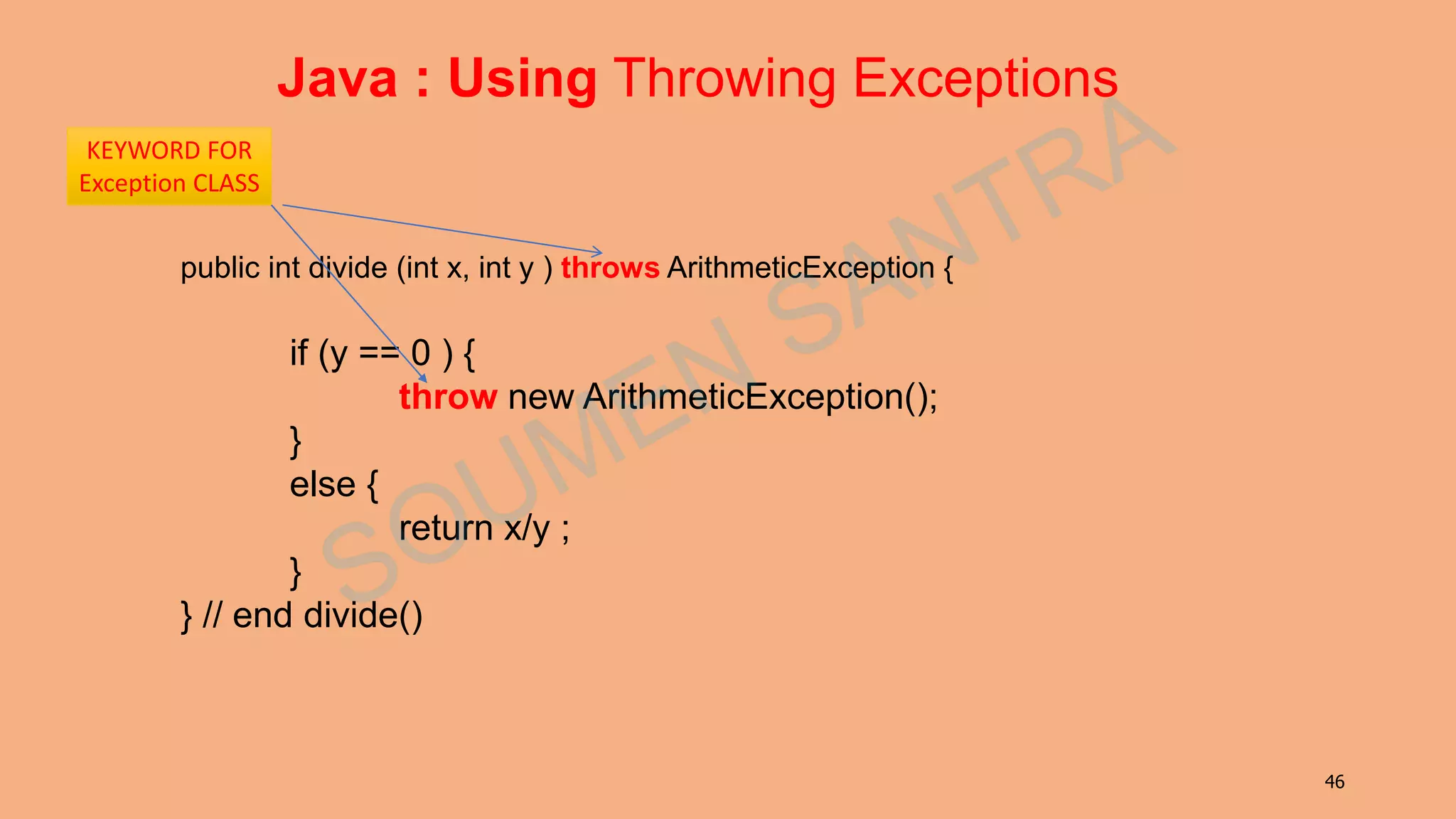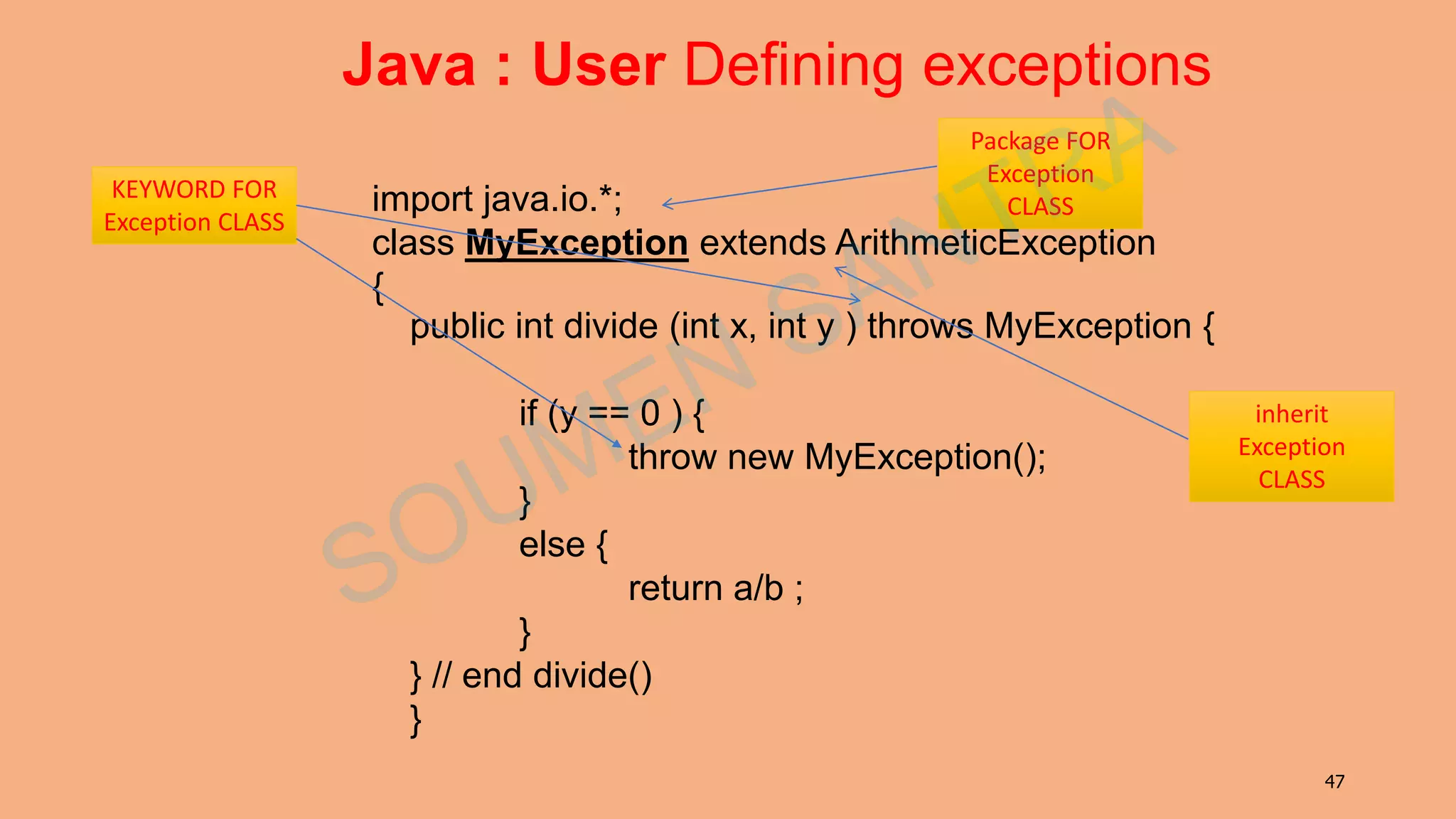The document outlines the importance and features of Java as a programming language, emphasizing its object-oriented nature, platform independence, and security aspects. It covers various components such as the Java Virtual Machine (JVM), data types, inheritance, access modifiers, and exception handling mechanisms. Additionally, it discusses the role of constructors and the use of keywords like 'this', 'super', 'final', and 'abstract' in Java programming.
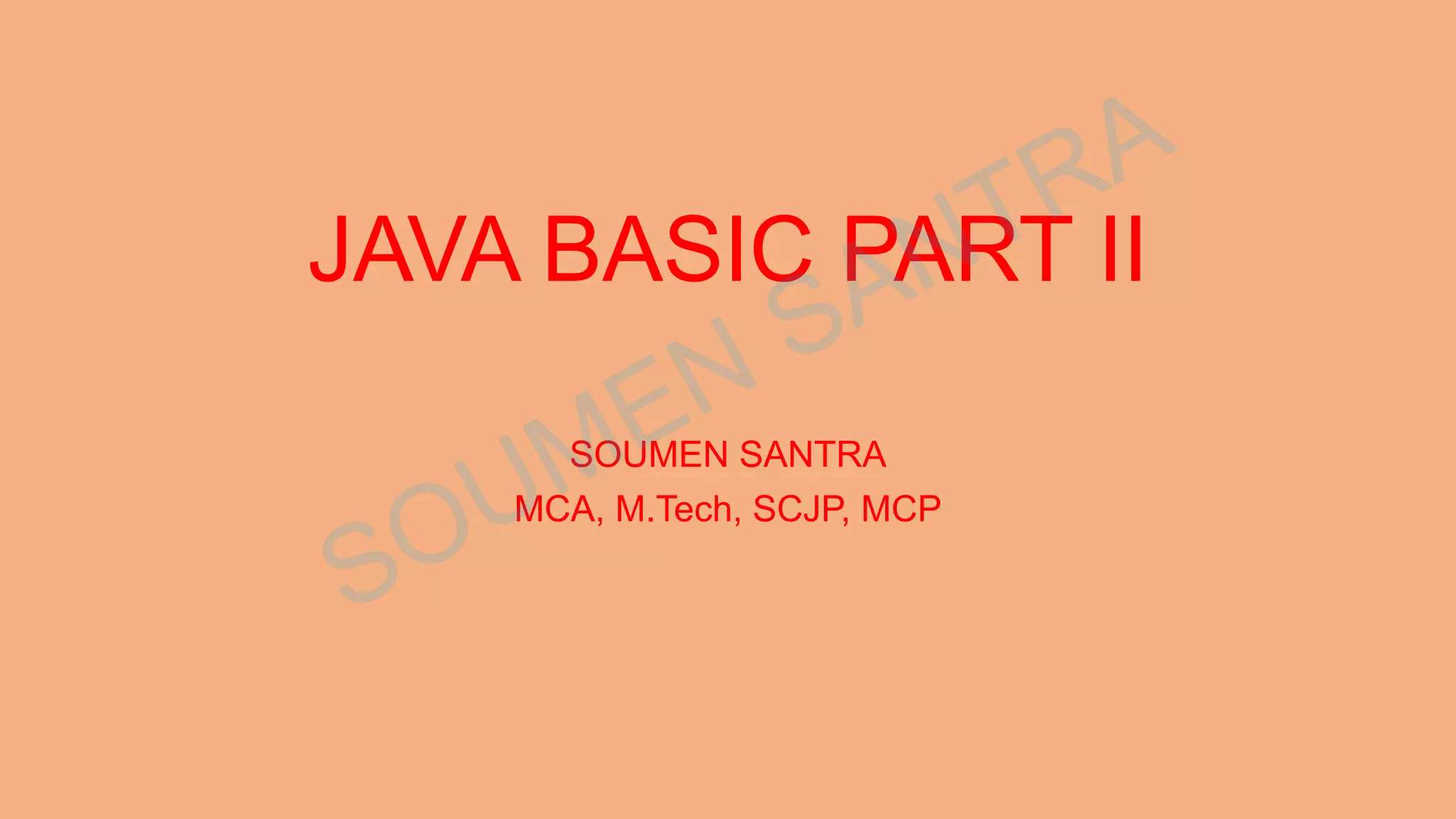
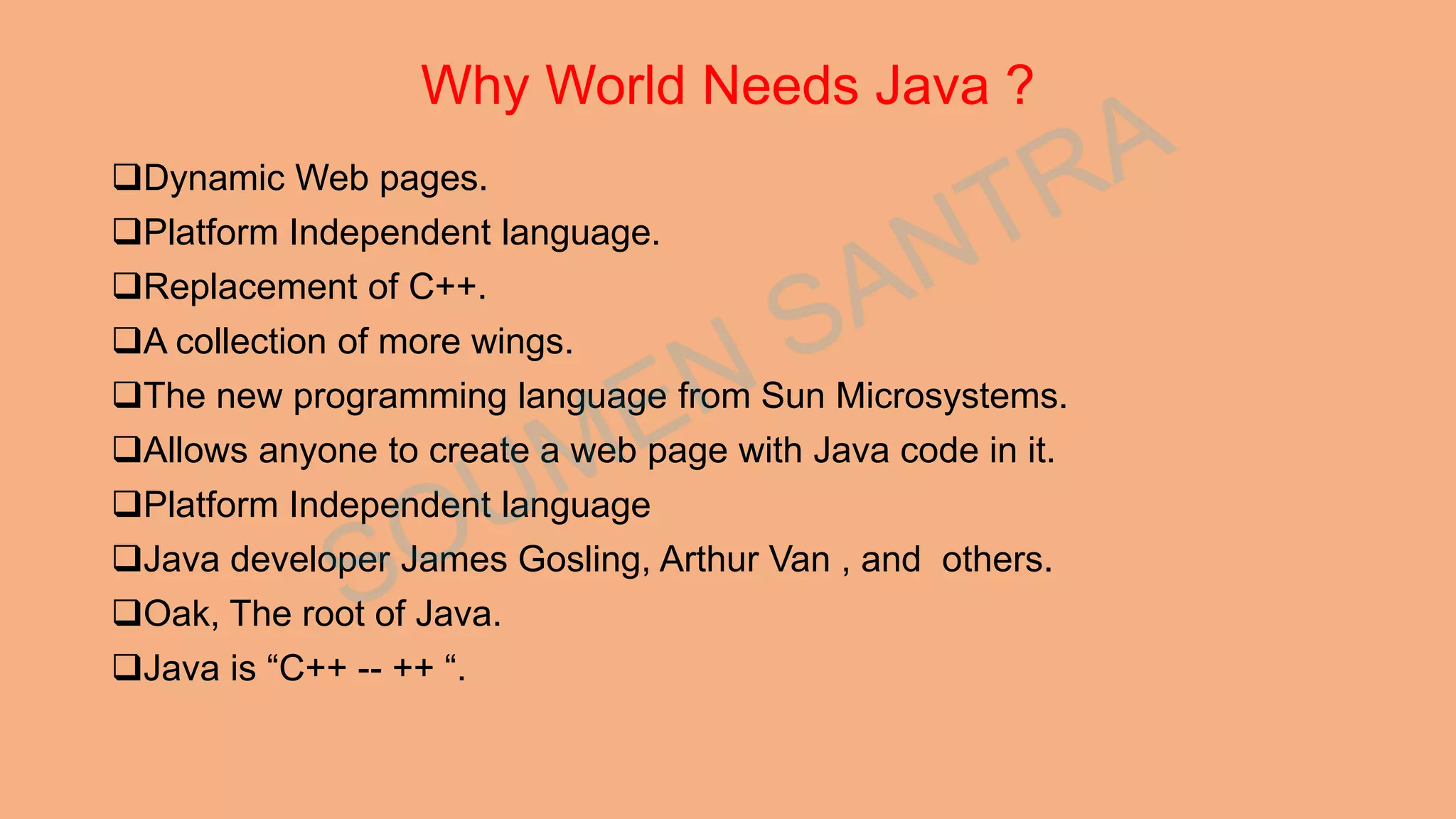
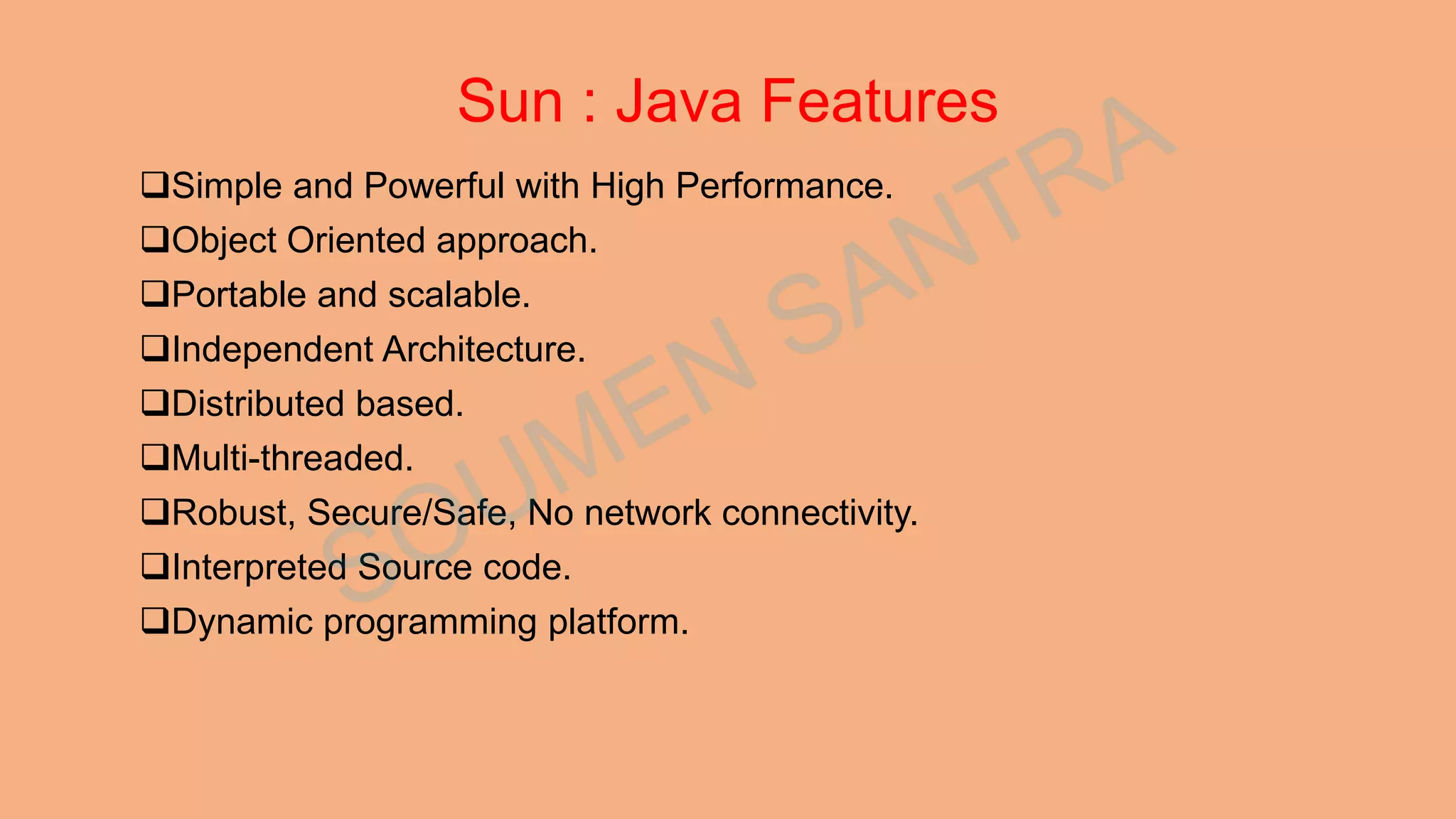
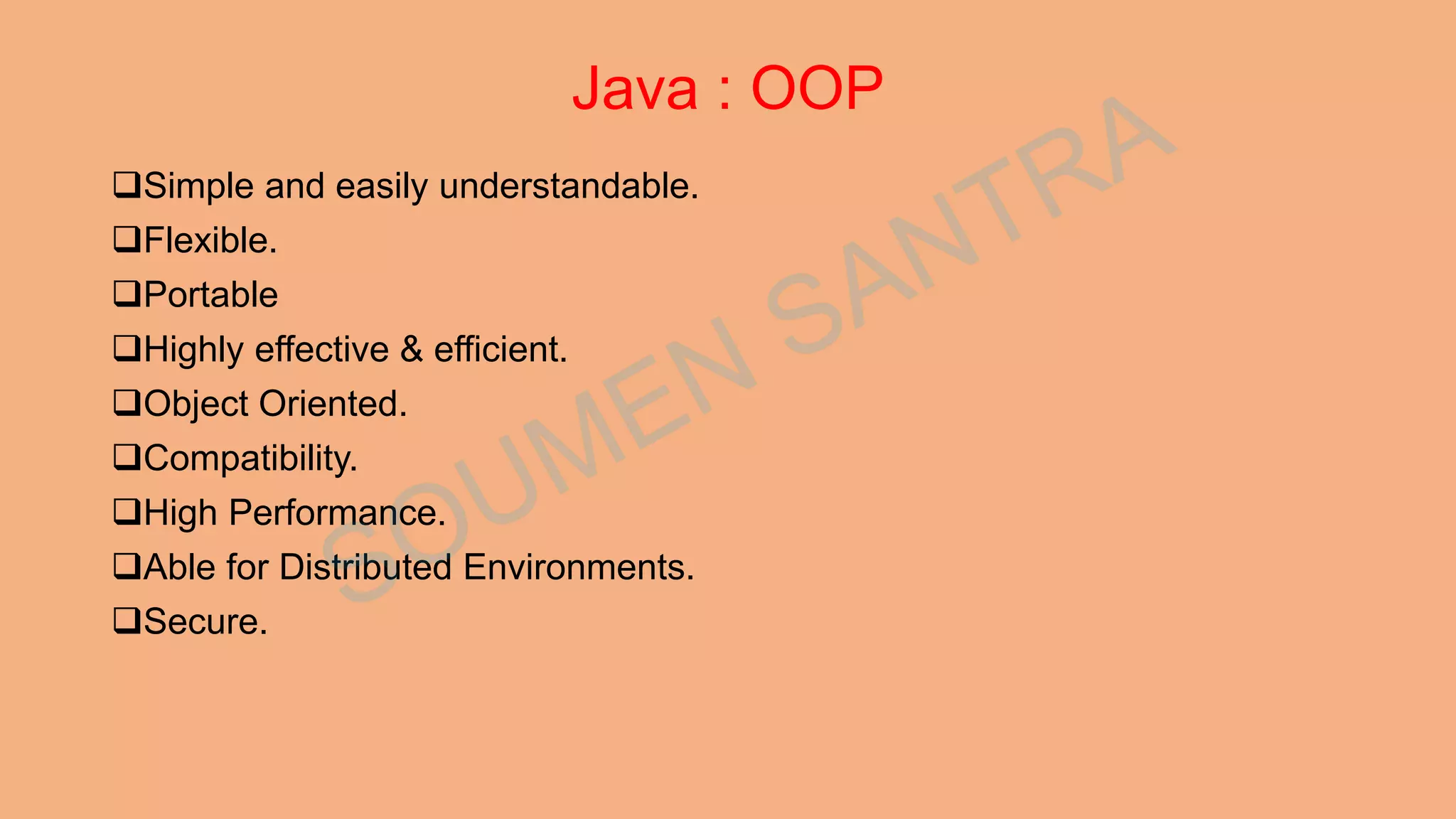
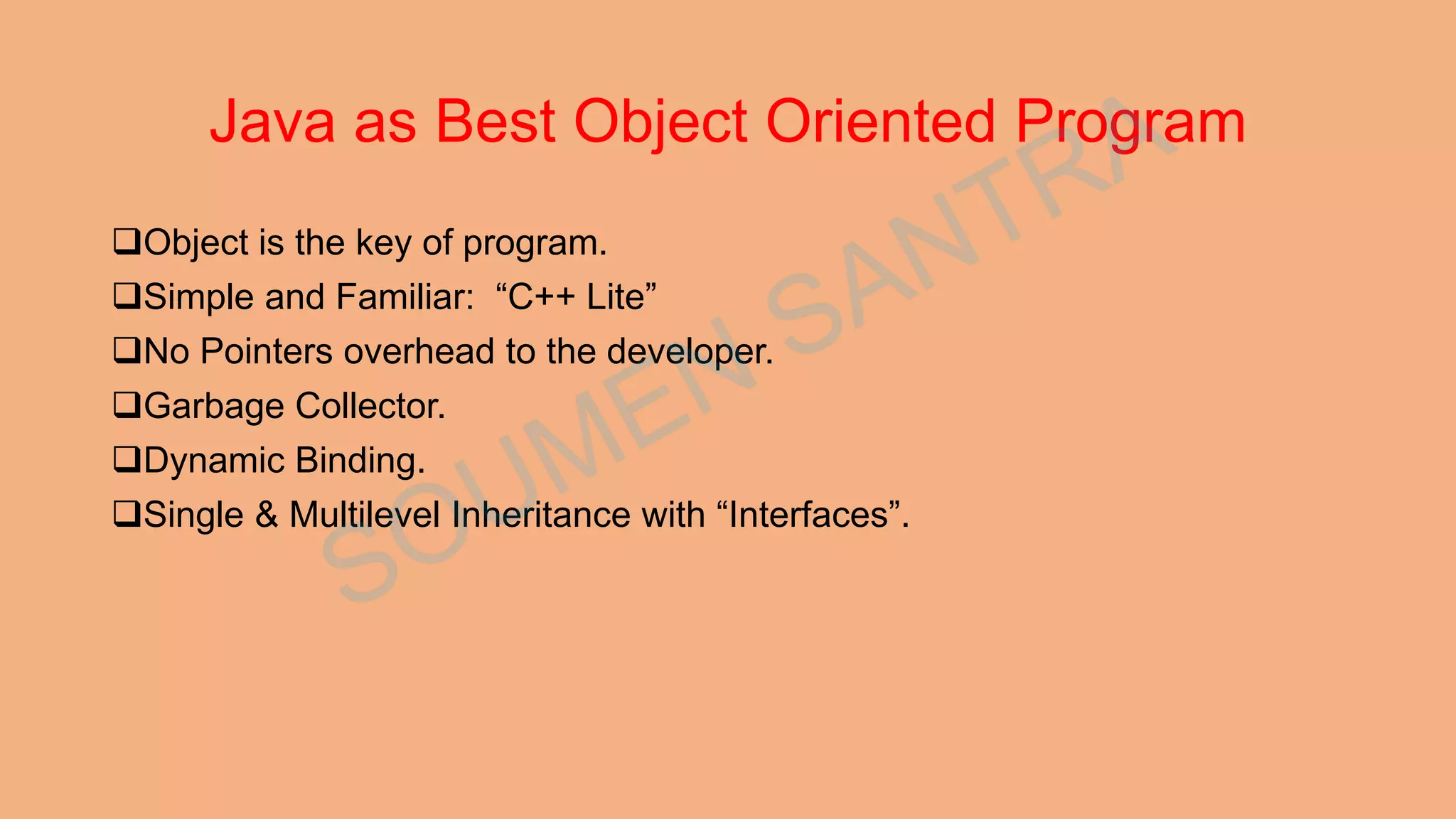
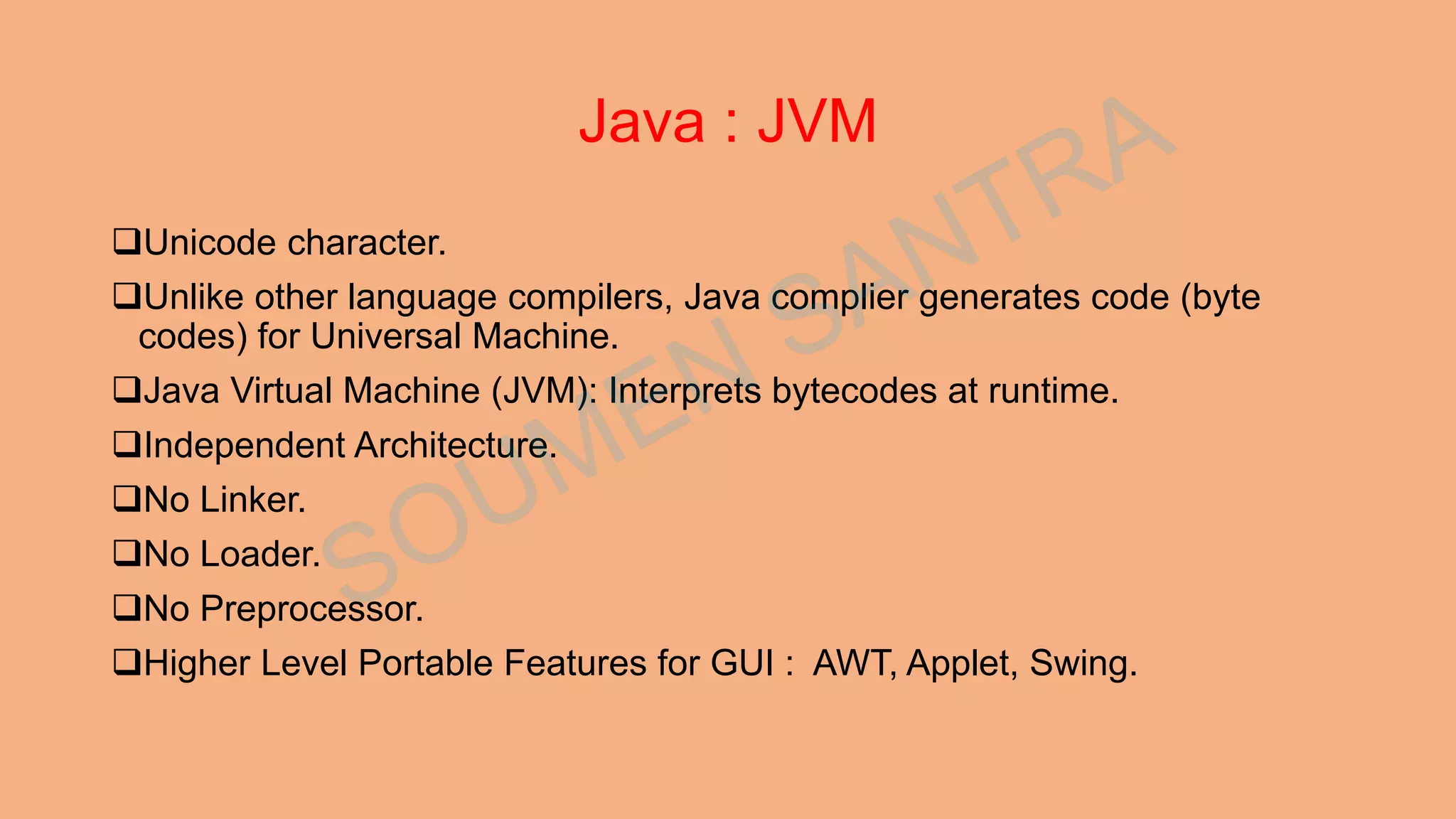
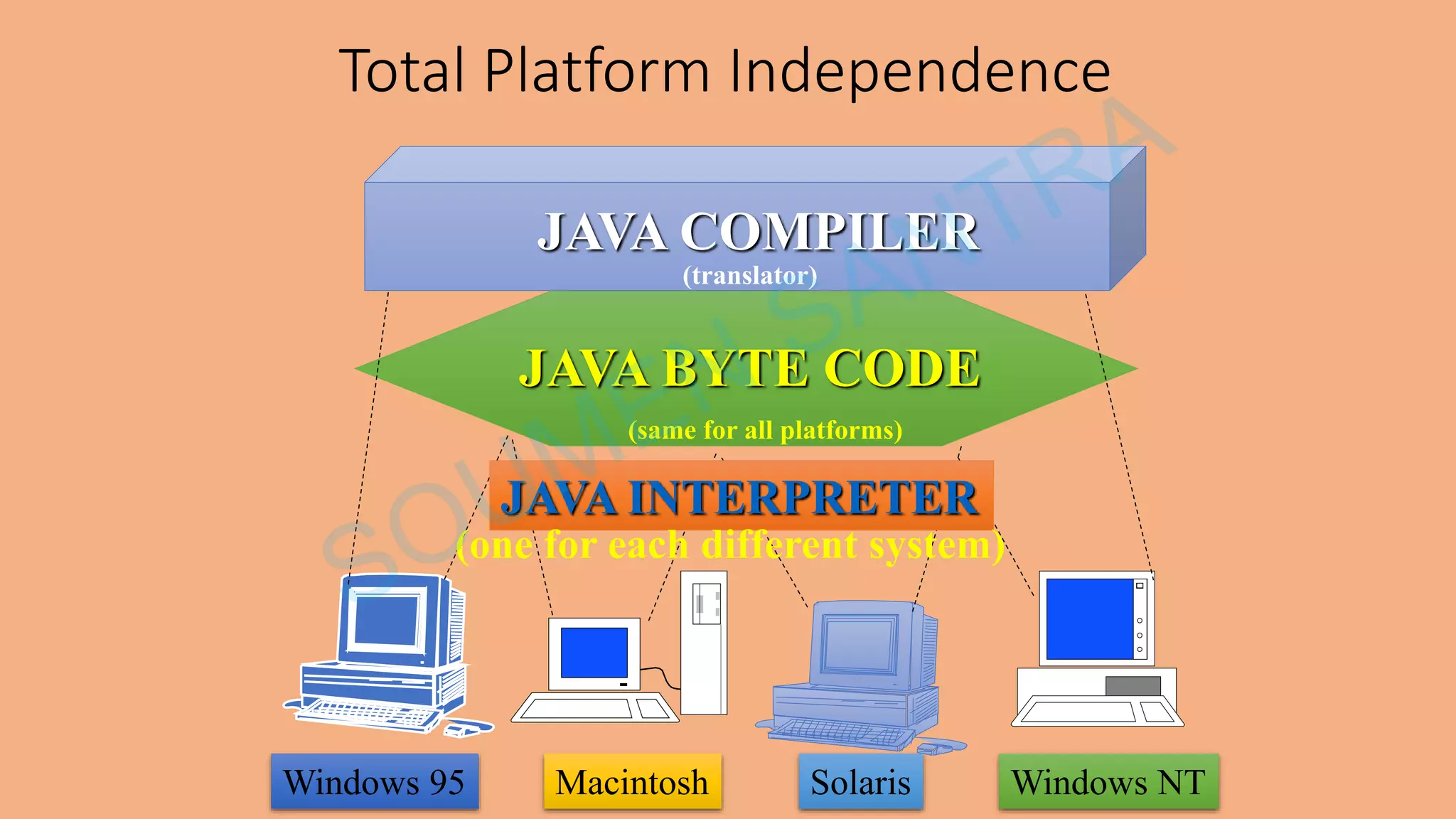
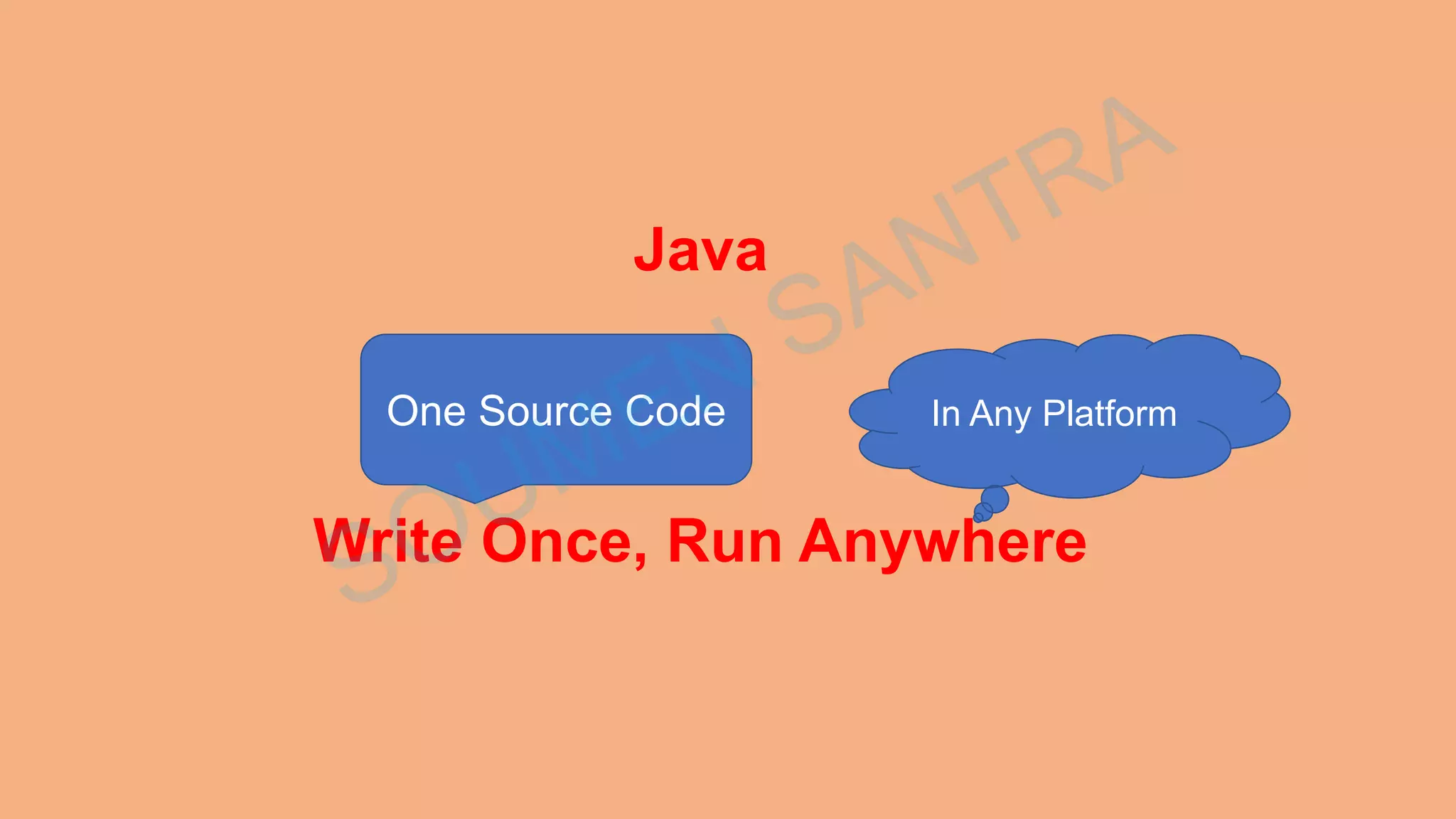
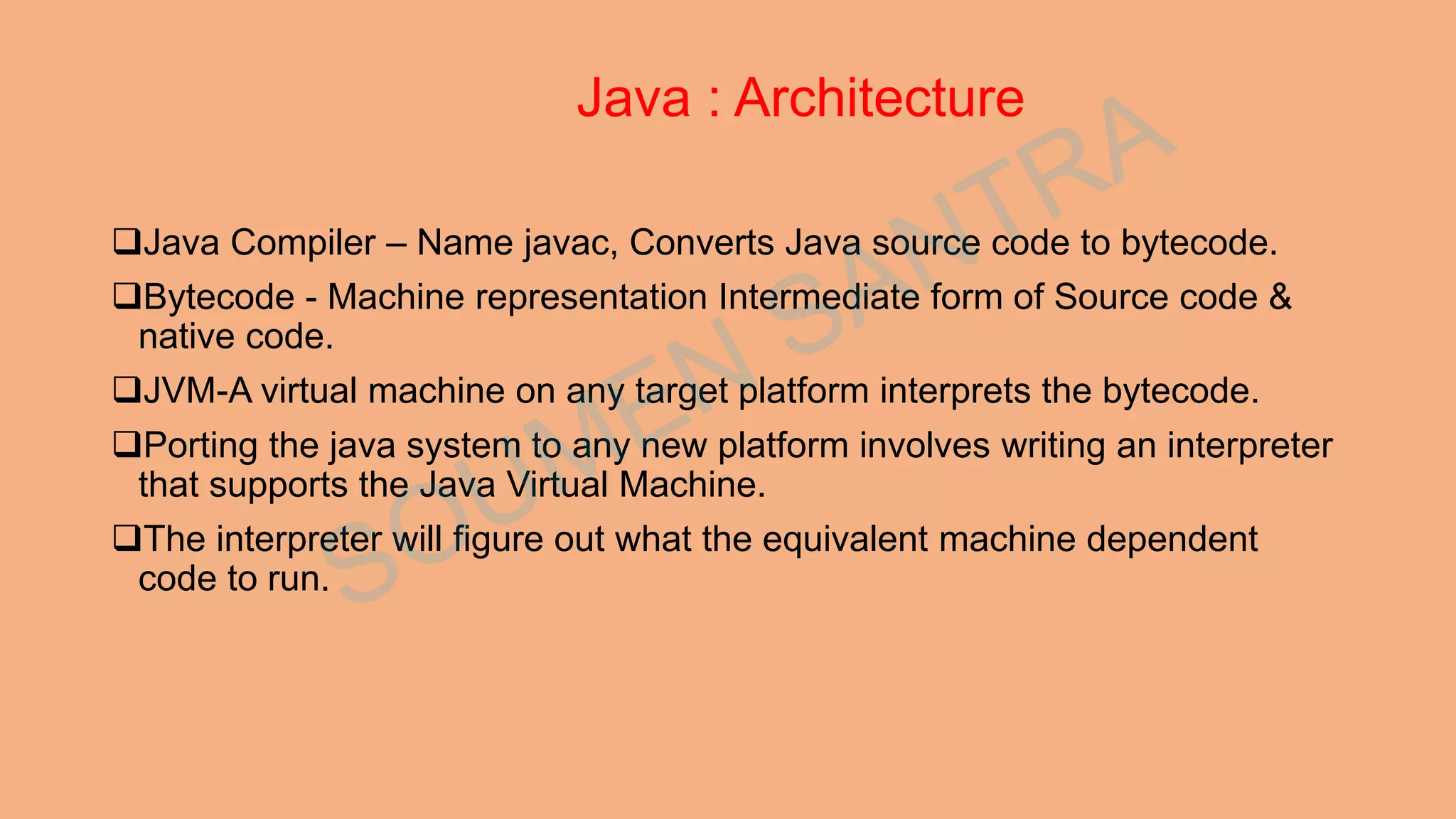

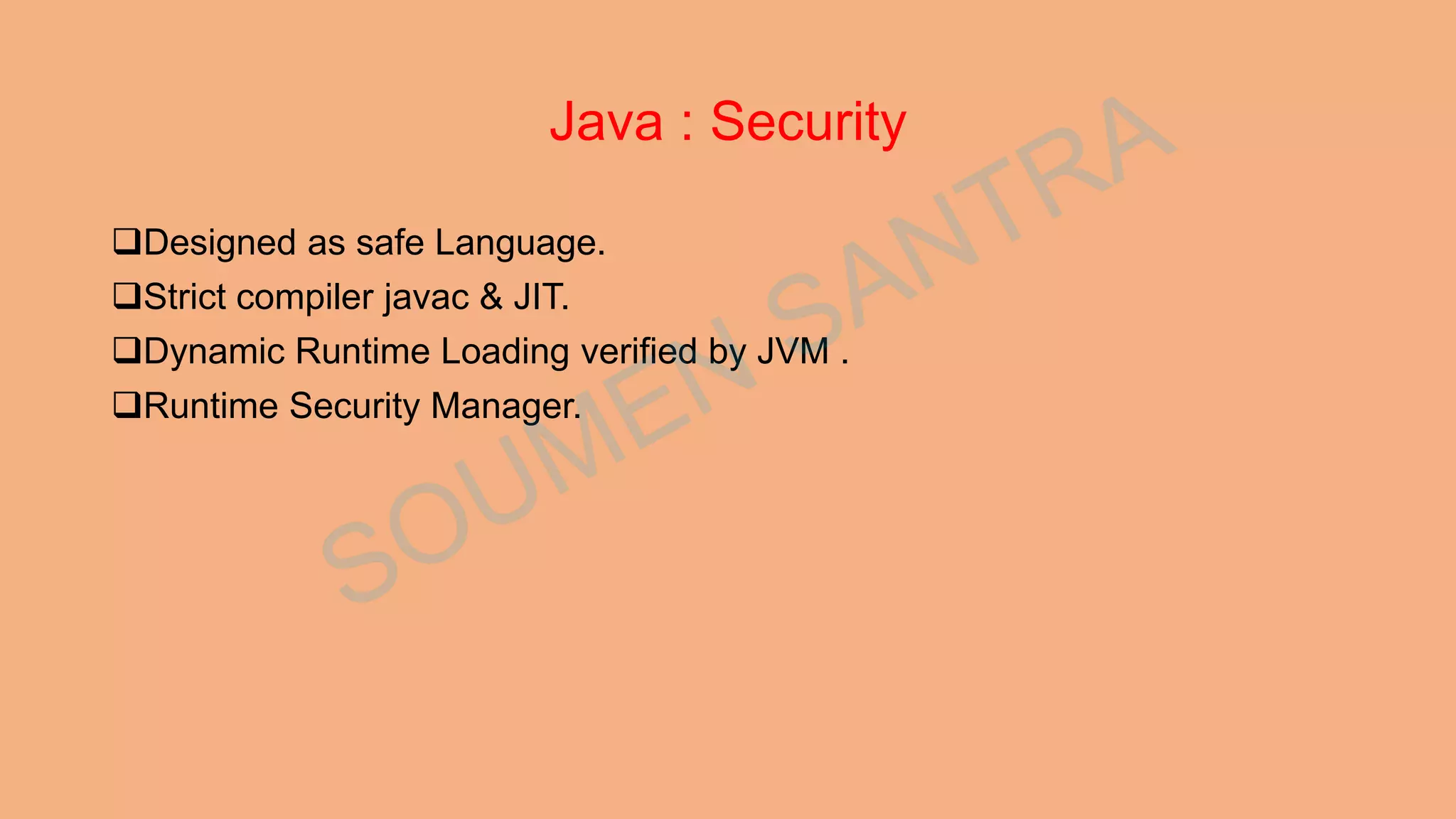
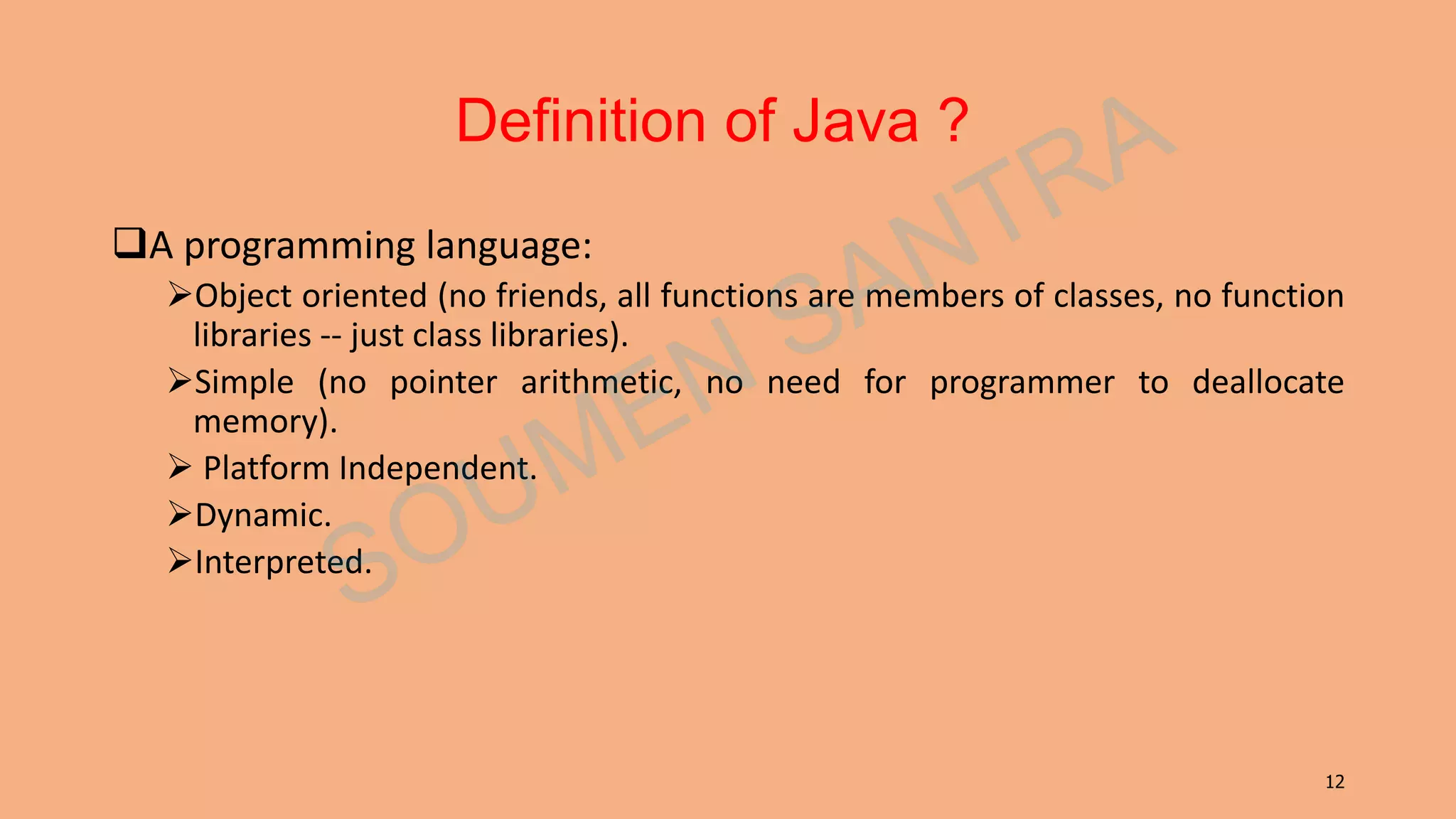
![13 Java Data Types Eight basic types 4 integers (byte, short, int, short) [ example : int a; ] 2 floating point (float, double) [example : double a;] 1 character (char) [example : char a; ] 1 boolean (boolean) [example : boolean a; ] Everything else is an object String s; StringBuffer, StringBuilder, StringTokenizer](https://image.slidesharecdn.com/javabasicpart2-200620165127/75/Java-basic-part-2-Datatypes-Keywords-Features-Components-Security-Exceptions-13-2048.jpg)
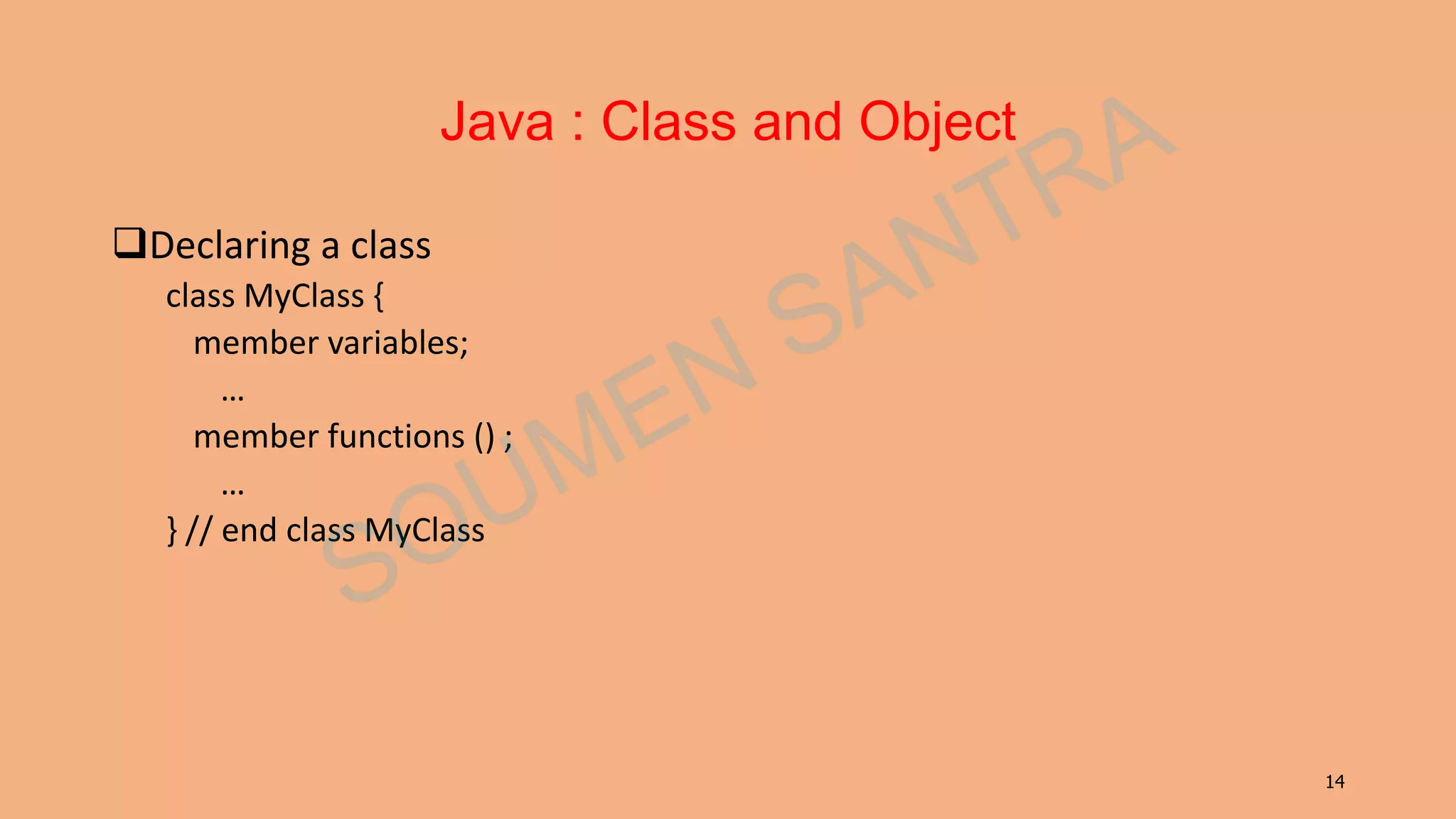
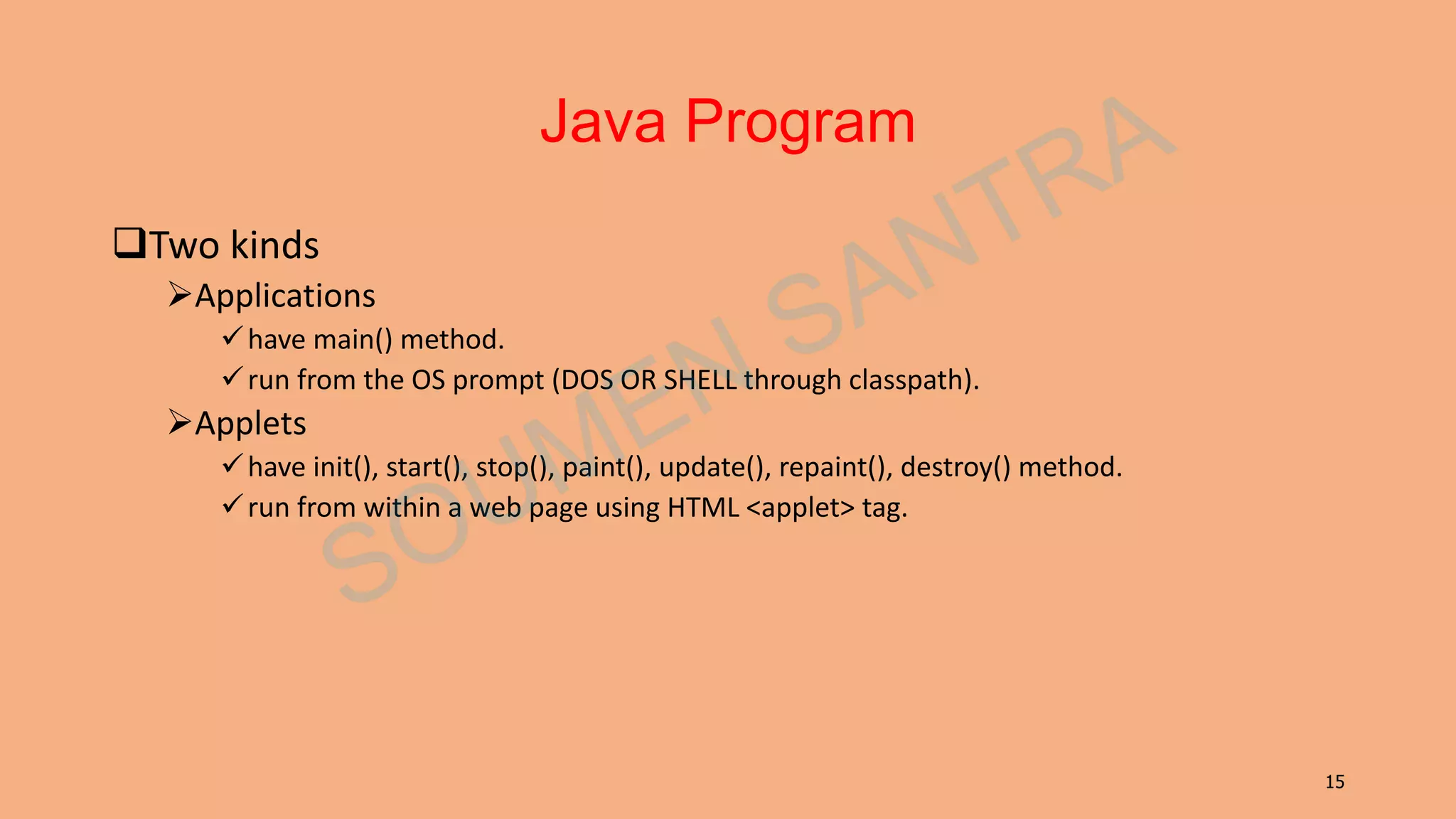
![16 First Java Application class MyClass { public static void main(String s [ ] ) { System.out.println(“Hello World”); } } // end class MyClass](https://image.slidesharecdn.com/javabasicpart2-200620165127/75/Java-basic-part-2-Datatypes-Keywords-Features-Components-Security-Exceptions-16-2048.jpg)
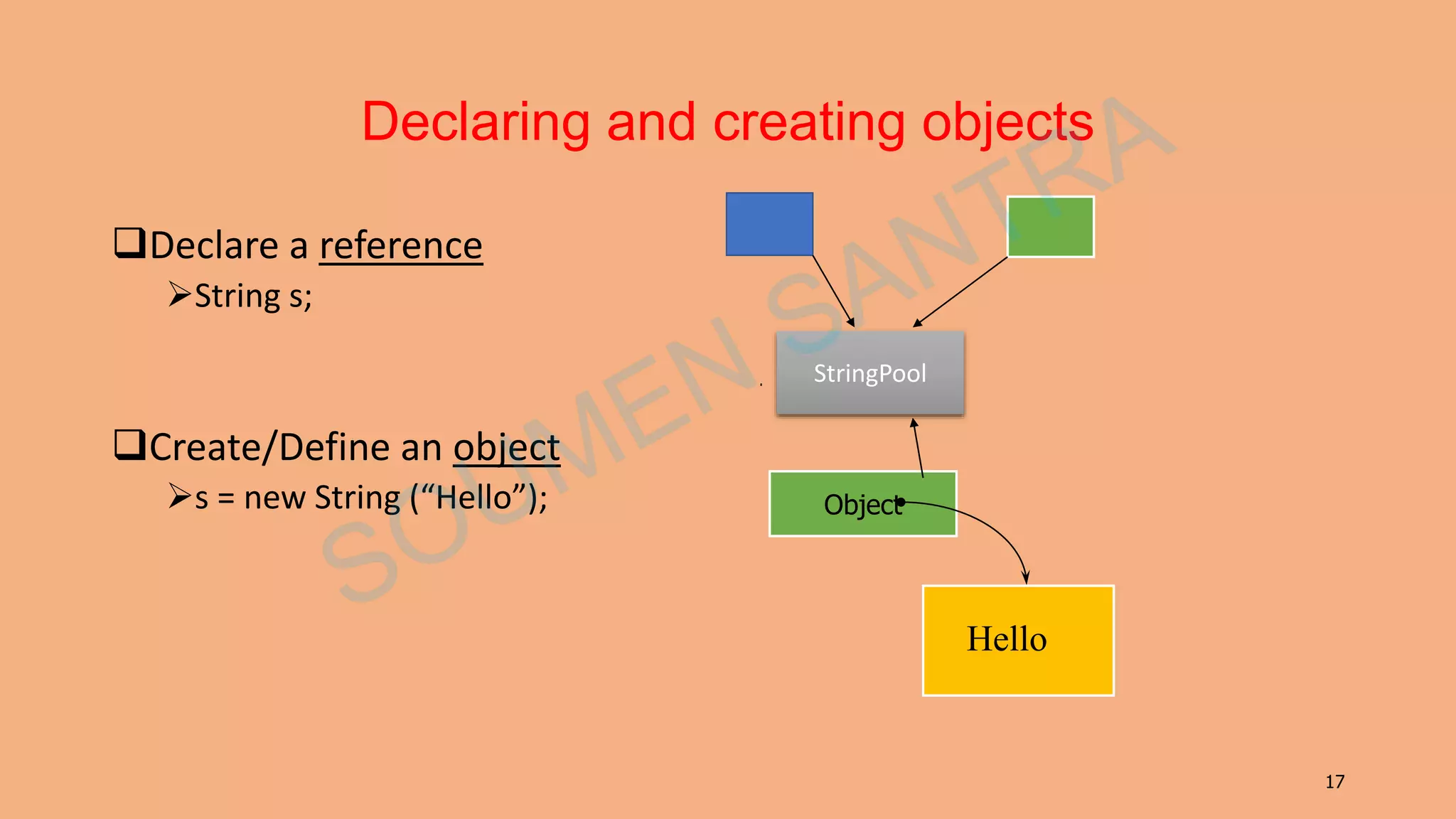
![18 Java : Arrays Arrays are objects in Java. It is a derive object i.e. Integer based or double etc. A homogeneous contiguous collection of elements of specific datatype. It’s index starts with 0. Declaration of Array: int x [ ] ; // 1-dimensional int [ ] x ; // 1-dimensional int [ ] y [ ]; // 2-dimensional int y [ ][ ];// 2-dimensional Syntax of Array for allocate space x = new int [5]; y = new int [5][10];](https://image.slidesharecdn.com/javabasicpart2-200620165127/75/Java-basic-part-2-Datatypes-Keywords-Features-Components-Security-Exceptions-18-2048.jpg)
![19 Java : Arrays length It is used to retrieve the size of an array. int a [ ] = new int [7]; // 1-dimensional System.out.println(a.length); //output print ‘7’ int b [ ] [ ] = new int [7] [11]; System.out.println(a.length); //output print ‘7’ System.out.println(b.length * b[0].length); //output print ‘77’ Let int [][][][] array = new int [5][10][12[20] , then … array.length * array[3rd dimensional].length * array[][2nd dimensional].length * array[][][1st dimensional].length is 5 x 10 x 12 x 20](https://image.slidesharecdn.com/javabasicpart2-200620165127/75/Java-basic-part-2-Datatypes-Keywords-Features-Components-Security-Exceptions-19-2048.jpg)
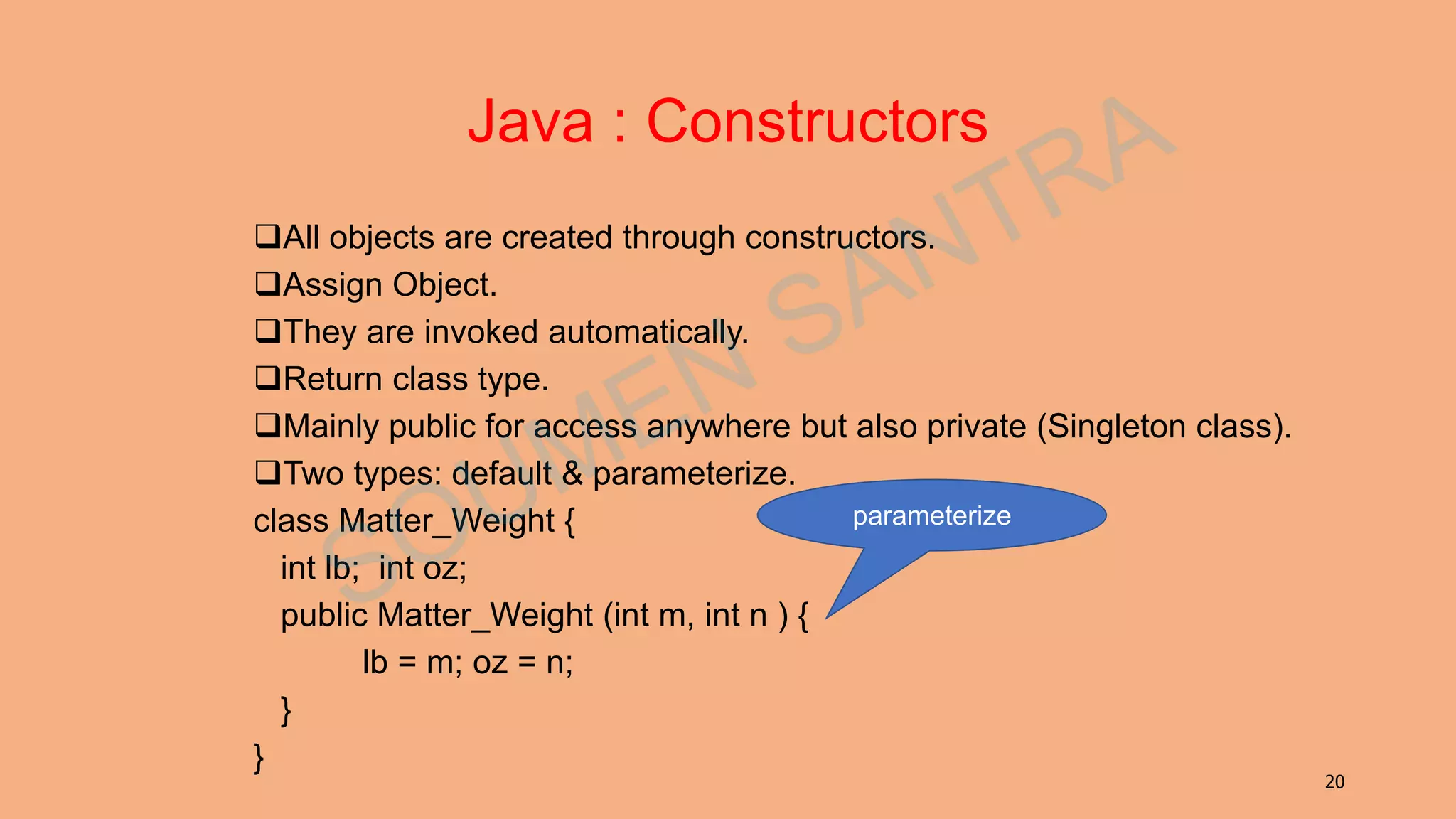
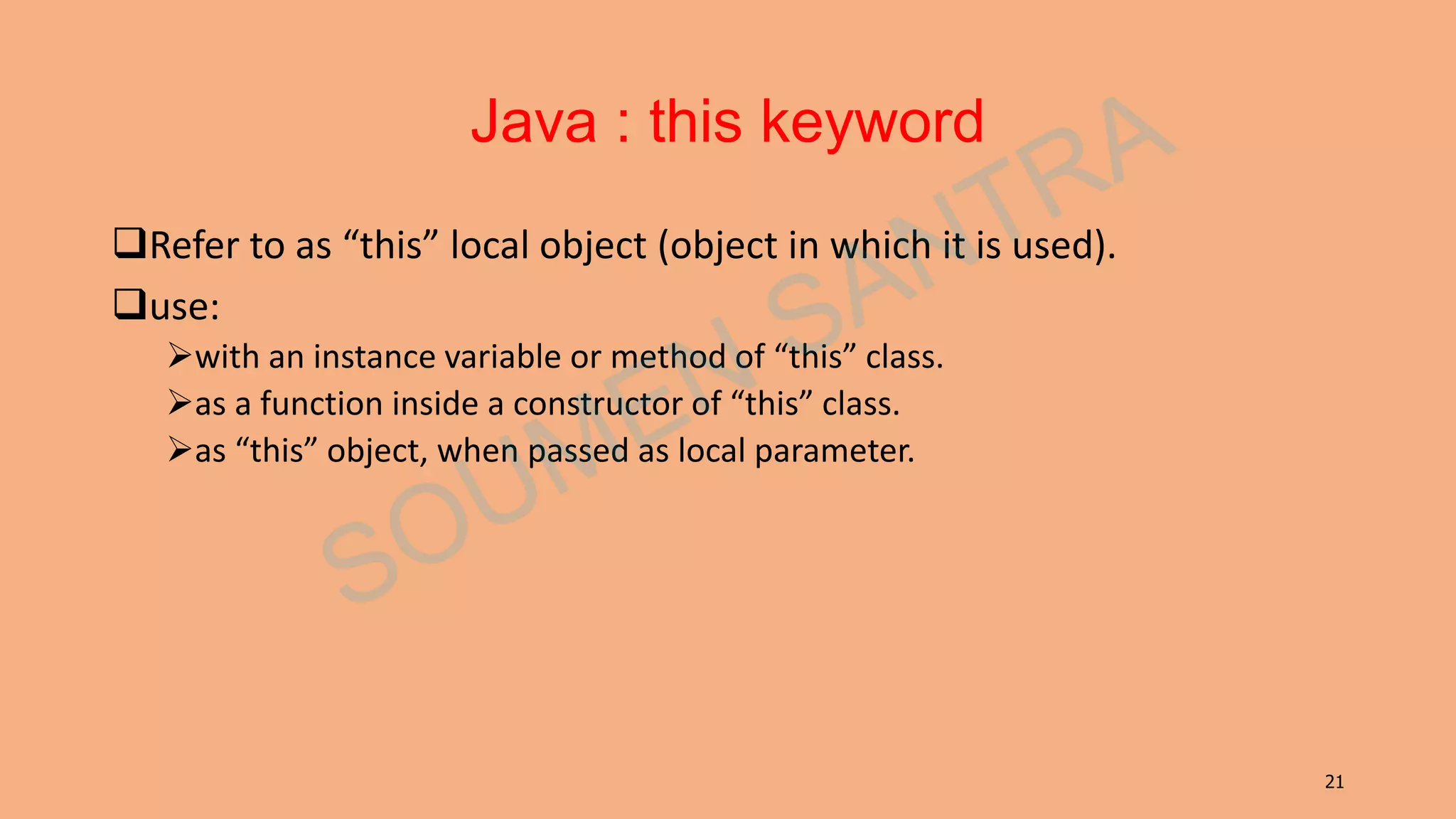
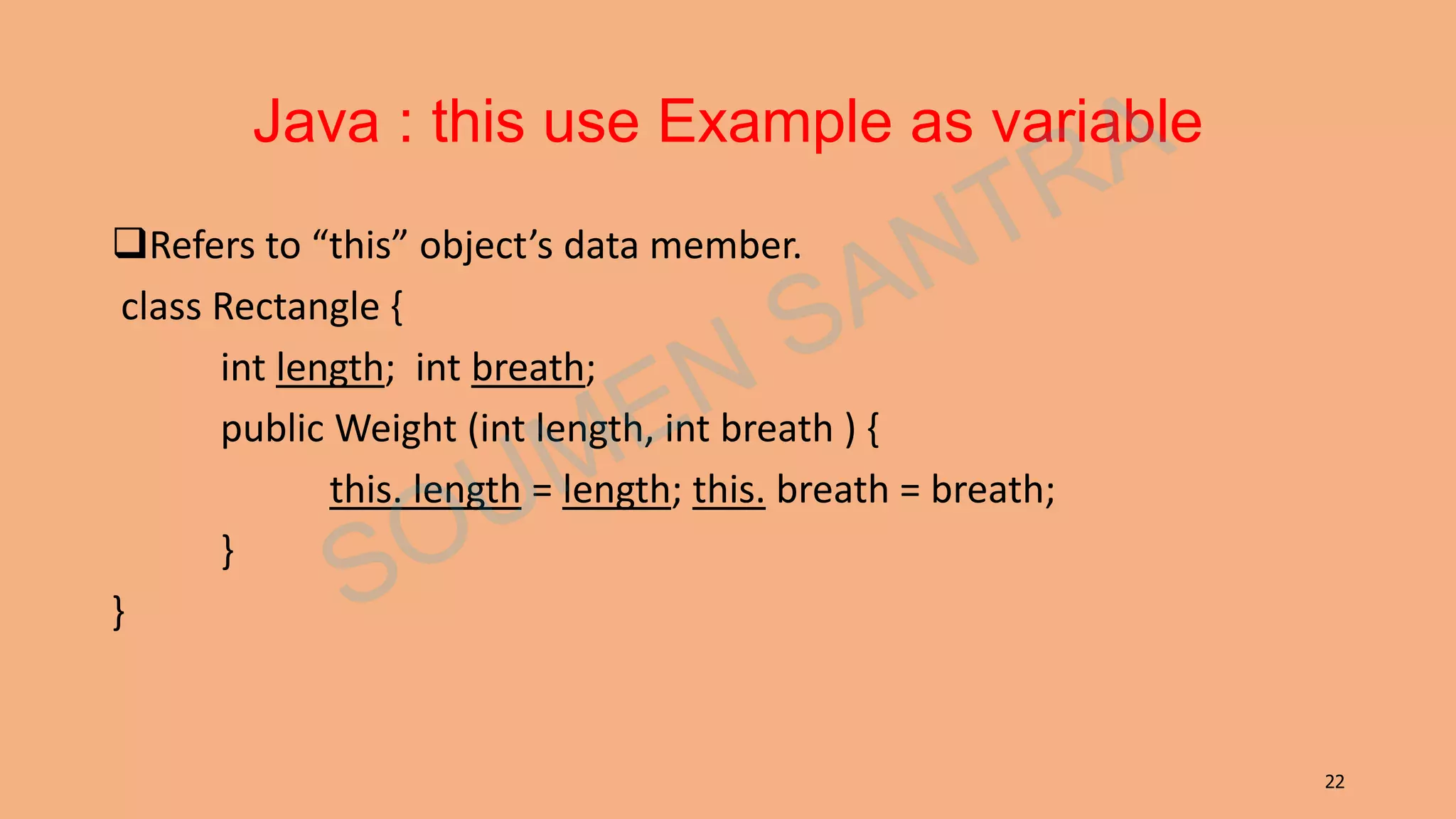
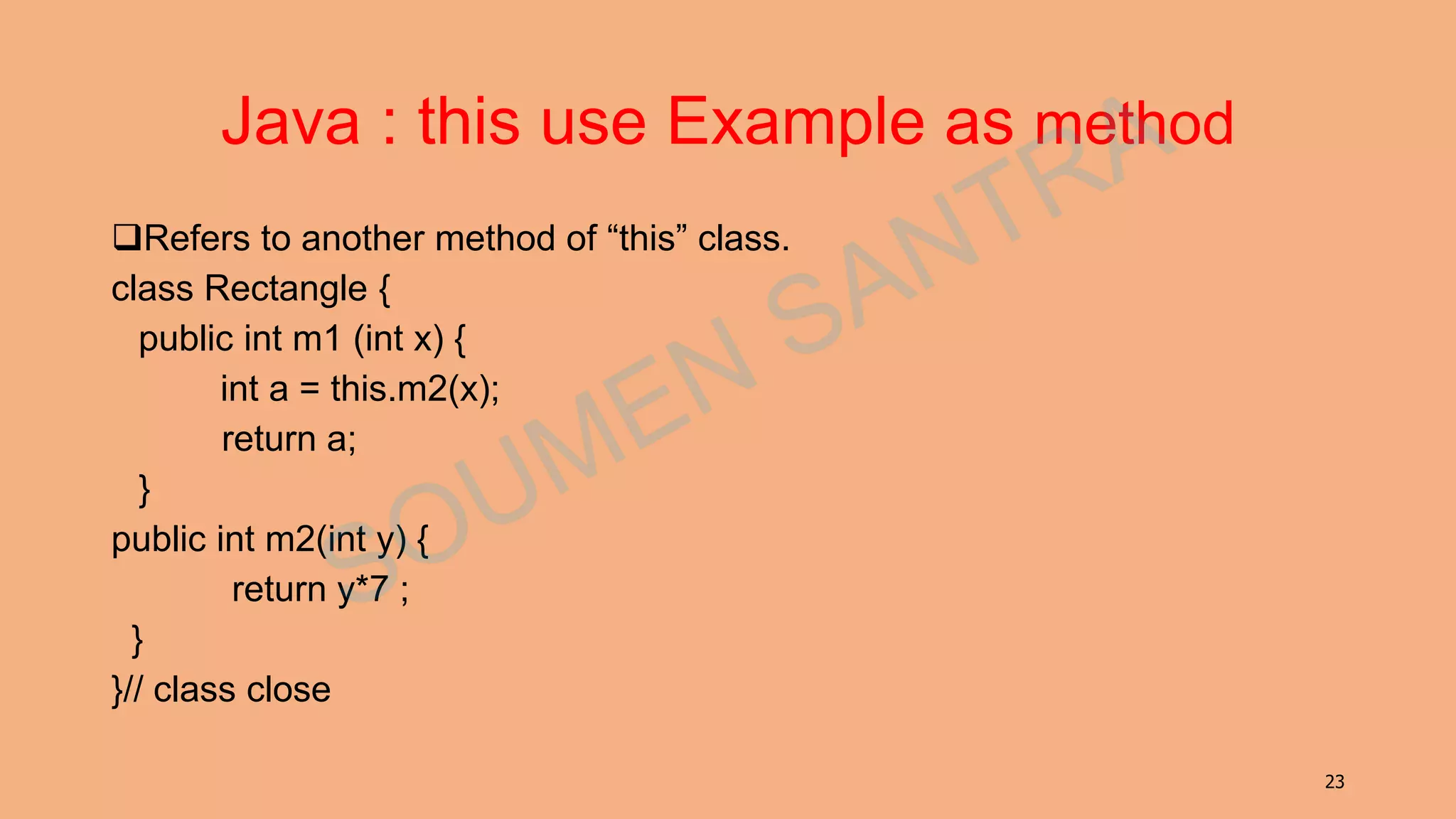
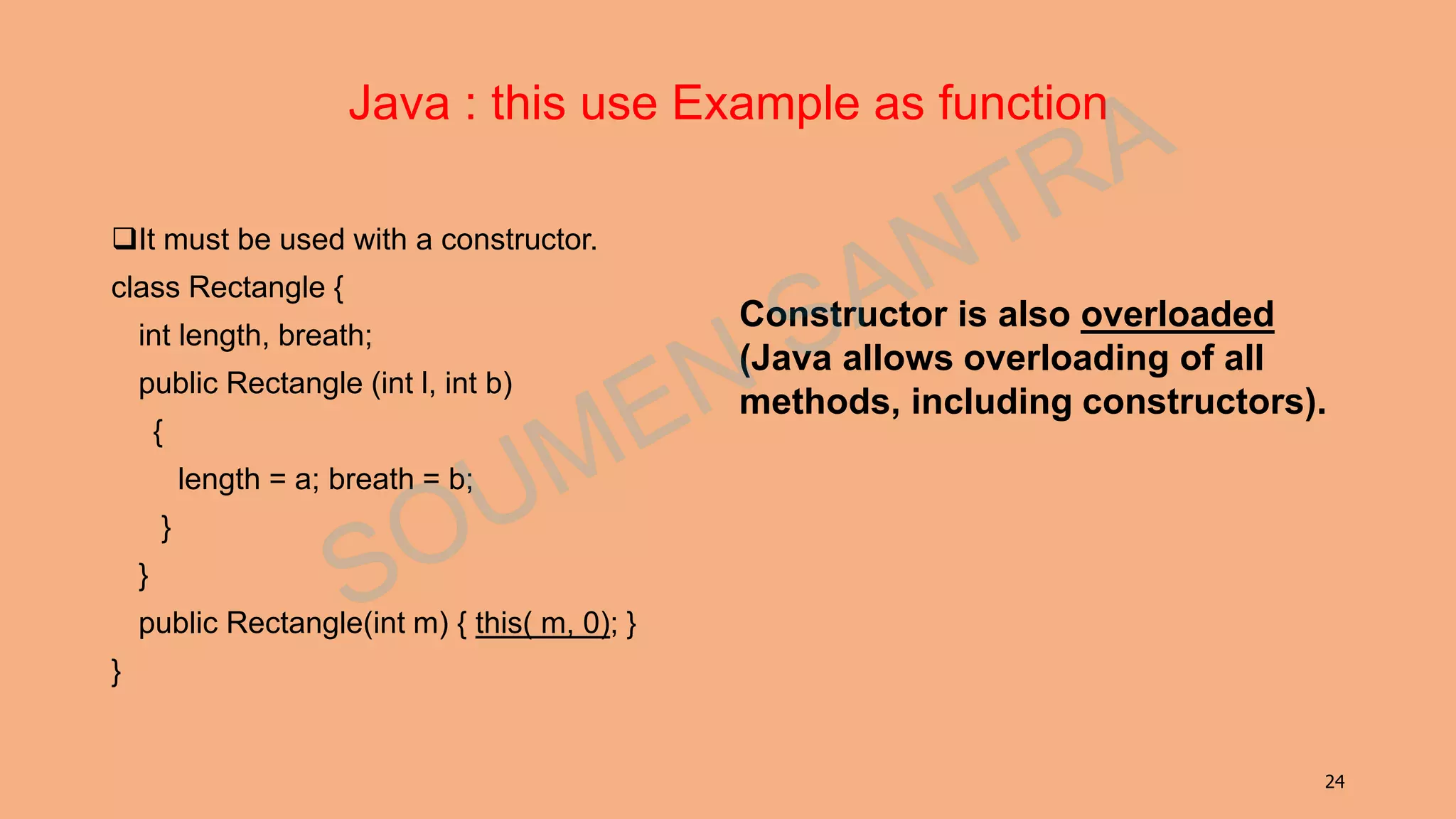
![25 Java : this use Example as function object, when passed as parameter Refers to the object that used to call the calling method. class MyClass { int a; public static void main(String [] s ) { (new MyClass ()).Method1(); } public void Method1() { Method2(this); } public void Method2(MyClass obj) { obj.a = 75; } }](https://image.slidesharecdn.com/javabasicpart2-200620165127/75/Java-basic-part-2-Datatypes-Keywords-Features-Components-Security-Exceptions-25-2048.jpg)
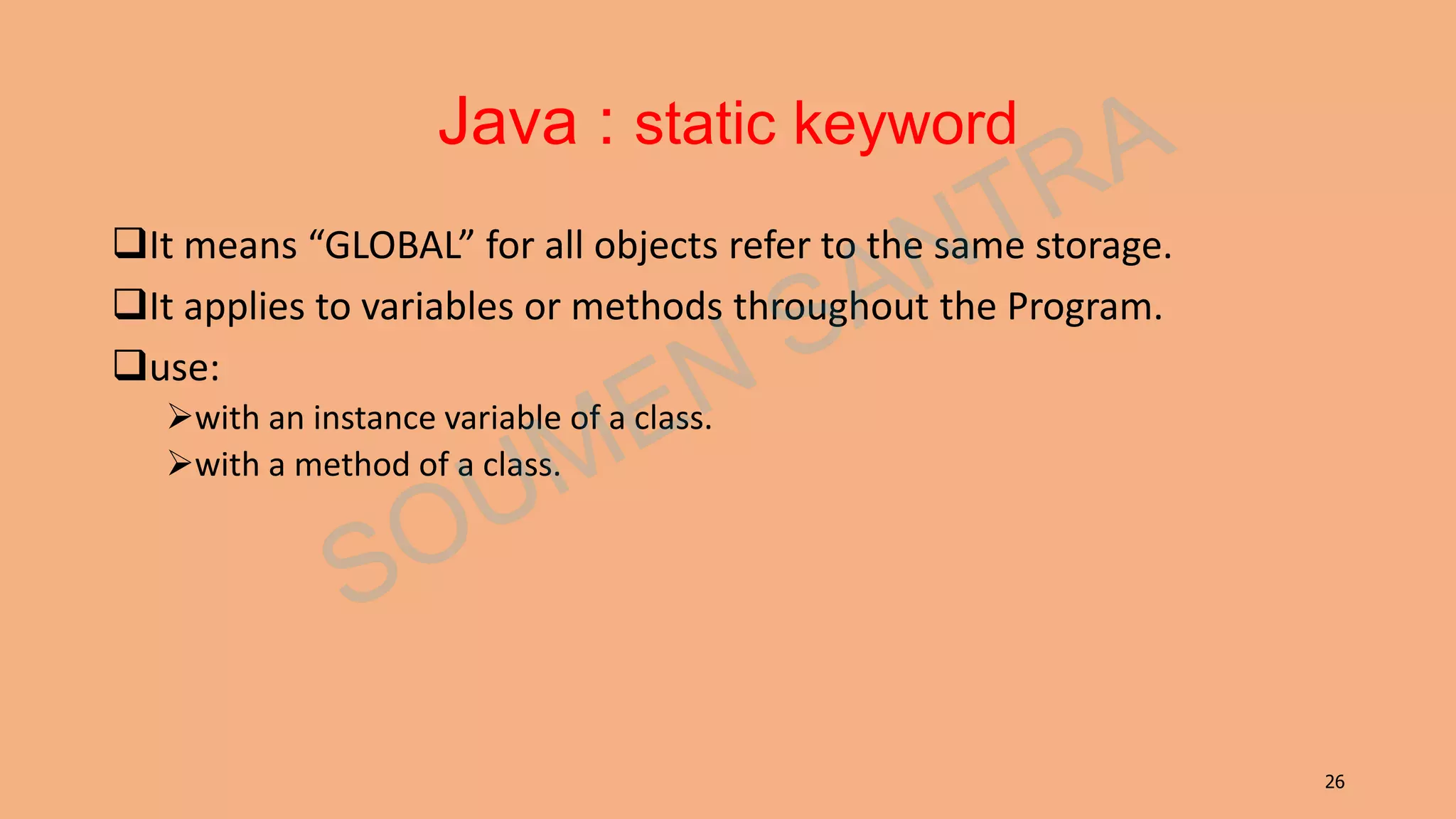
![27 Java : static keyword (with variables) class Order { private static int OrderCount; // shared by all objects of this class throughout the program public static void main(String [] s ) { Order obj1 = new Order(); obj1.updateOdCount(); } public void updateOdCount() { OrderCount++; } }](https://image.slidesharecdn.com/javabasicpart2-200620165127/75/Java-basic-part-2-Datatypes-Keywords-Features-Components-Security-Exceptions-27-2048.jpg)
![28 Java : static keyword (without methods) class Math { public static double sqrt(double m) { // calculate return result; } } class MyClass{ public static void main(String [] s ) { double d; d = Math.sqrt(9.34); } }](https://image.slidesharecdn.com/javabasicpart2-200620165127/75/Java-basic-part-2-Datatypes-Keywords-Features-Components-Security-Exceptions-28-2048.jpg)
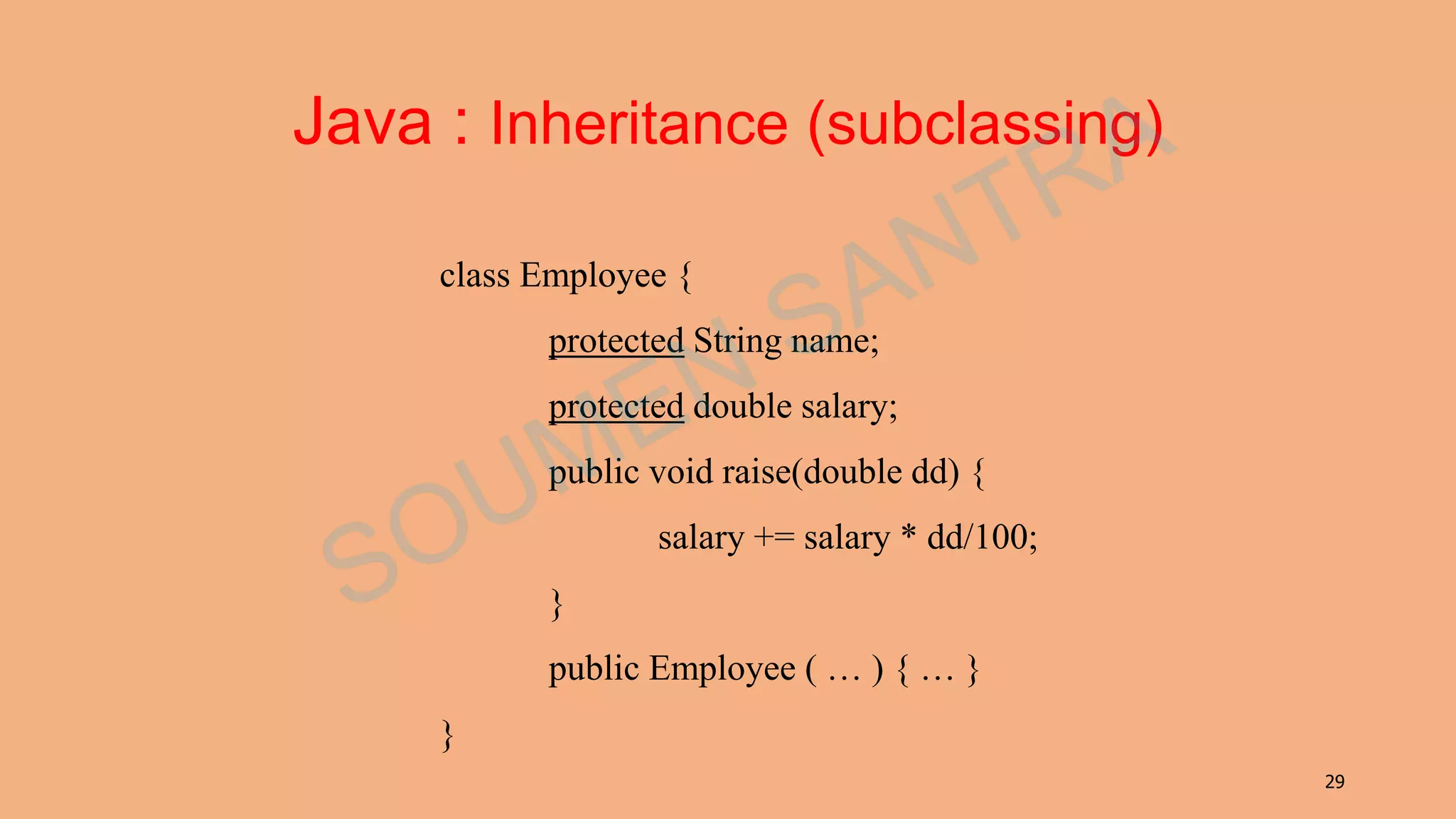
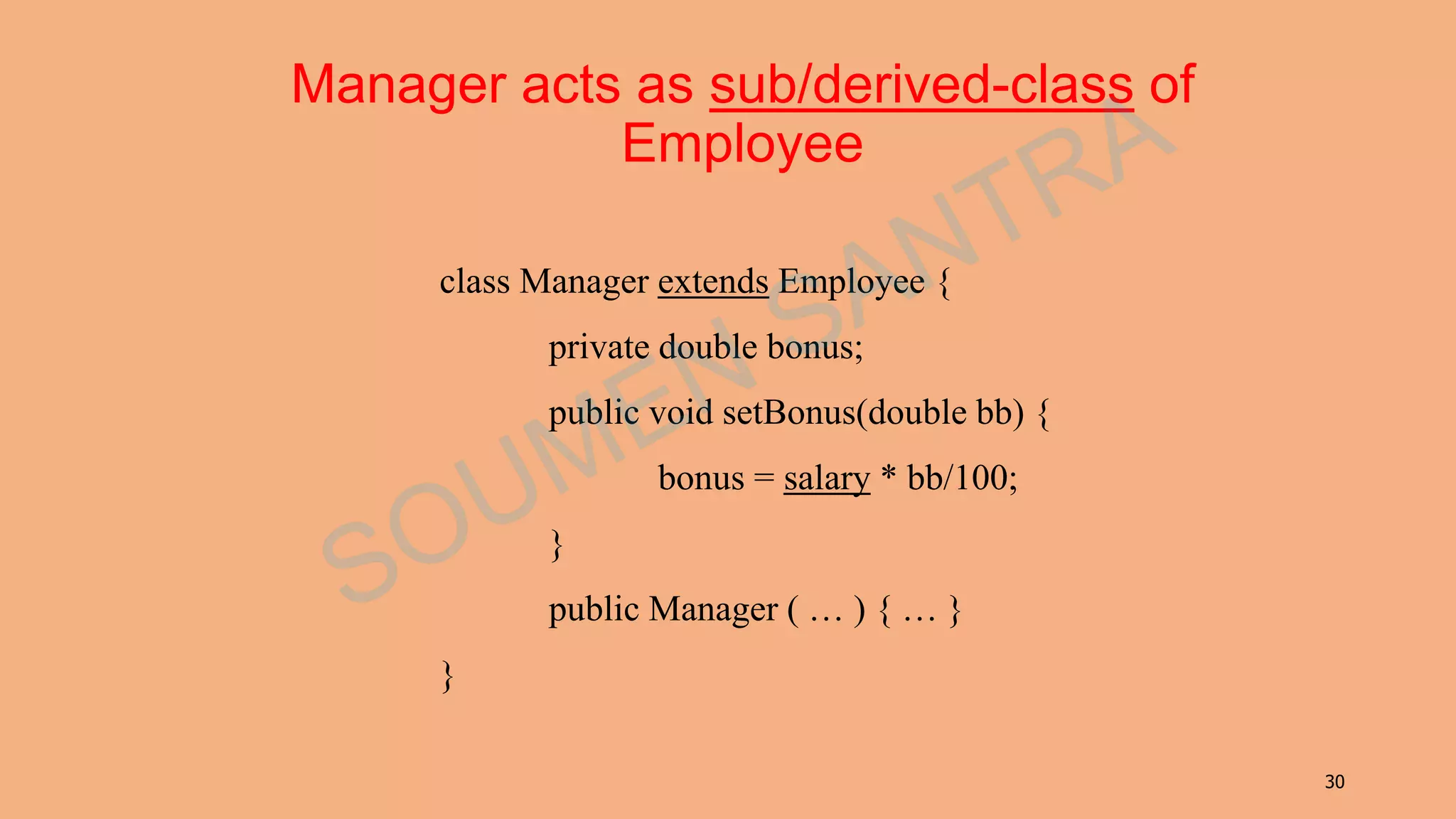
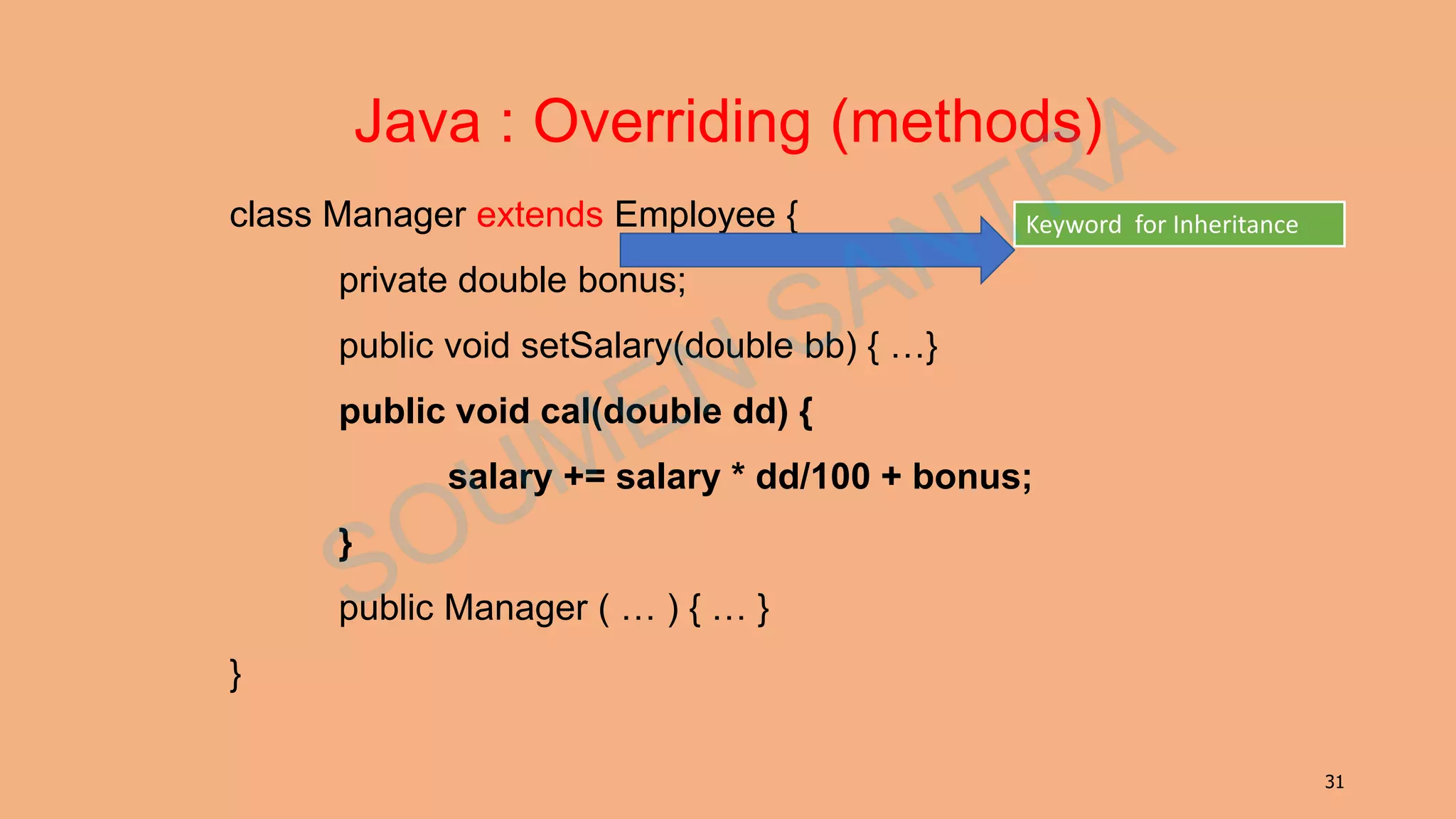
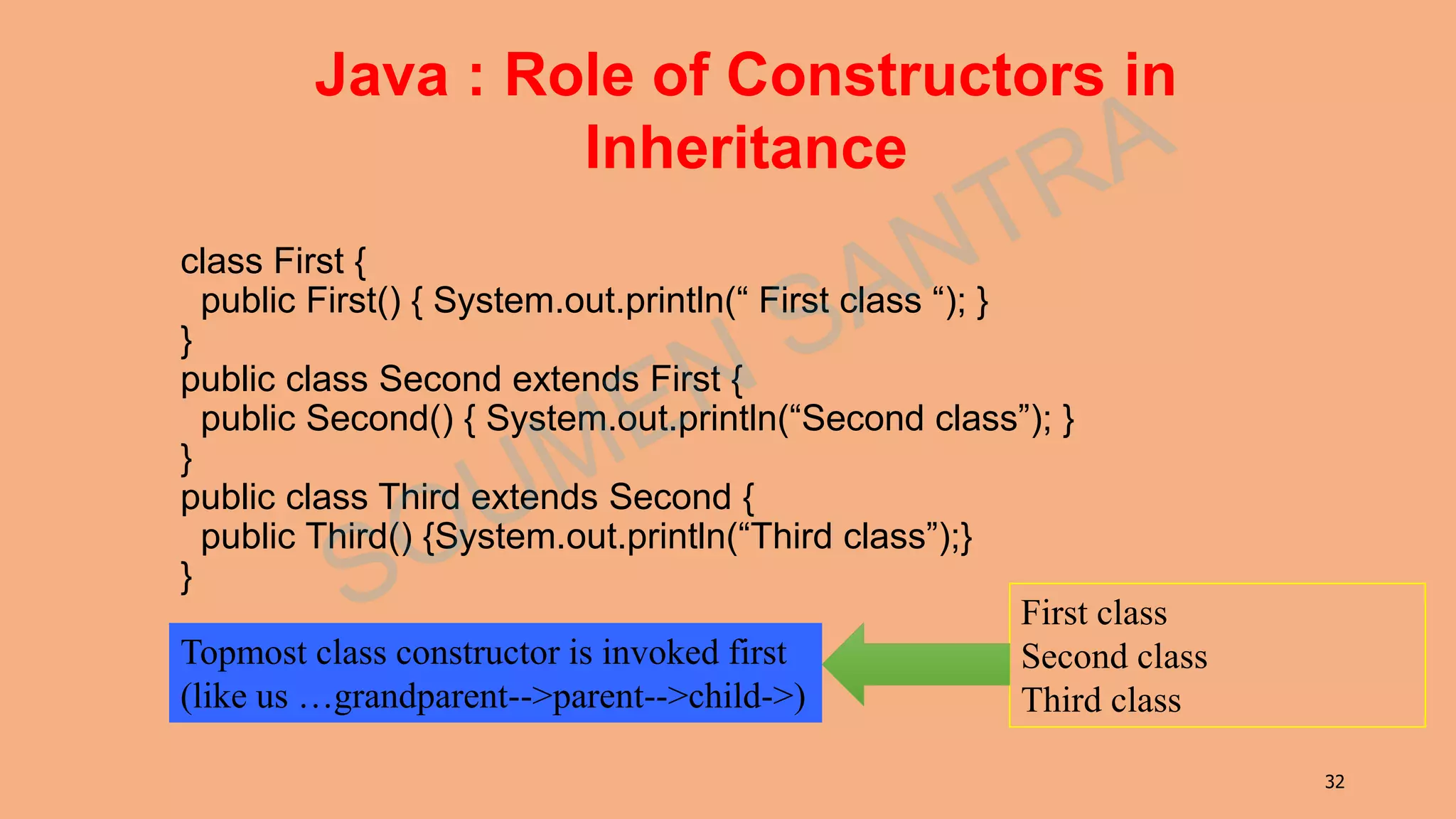
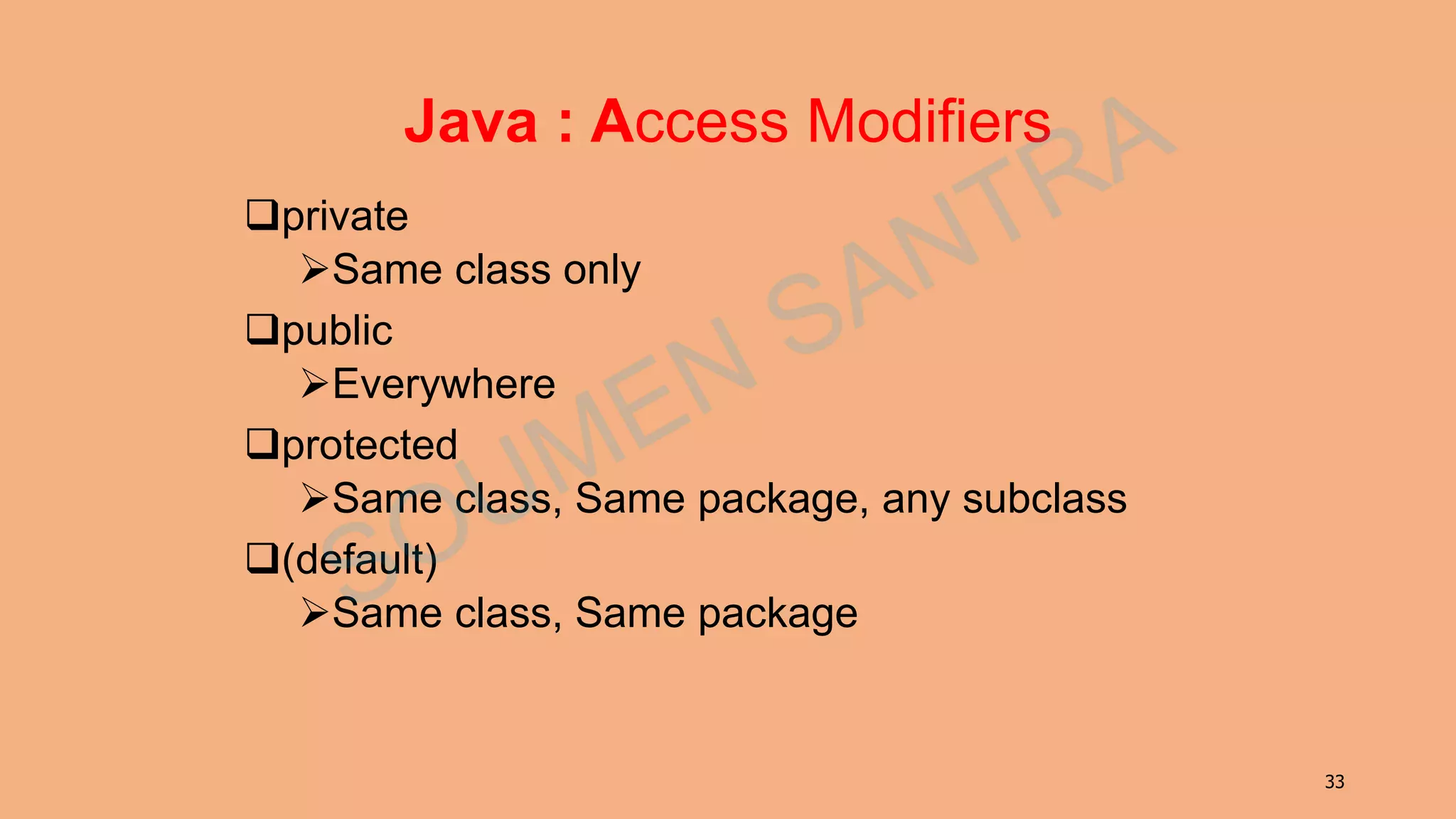
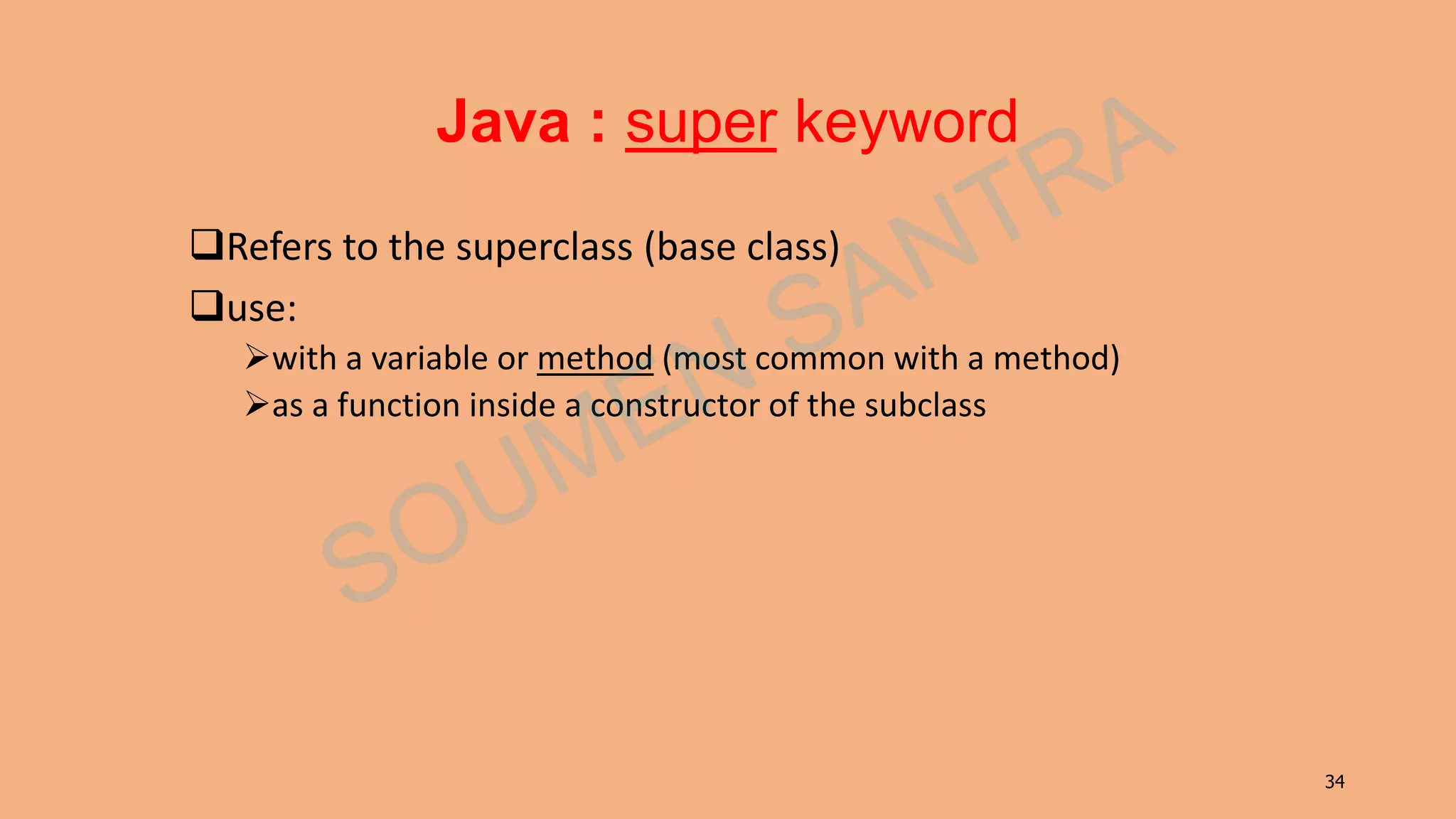
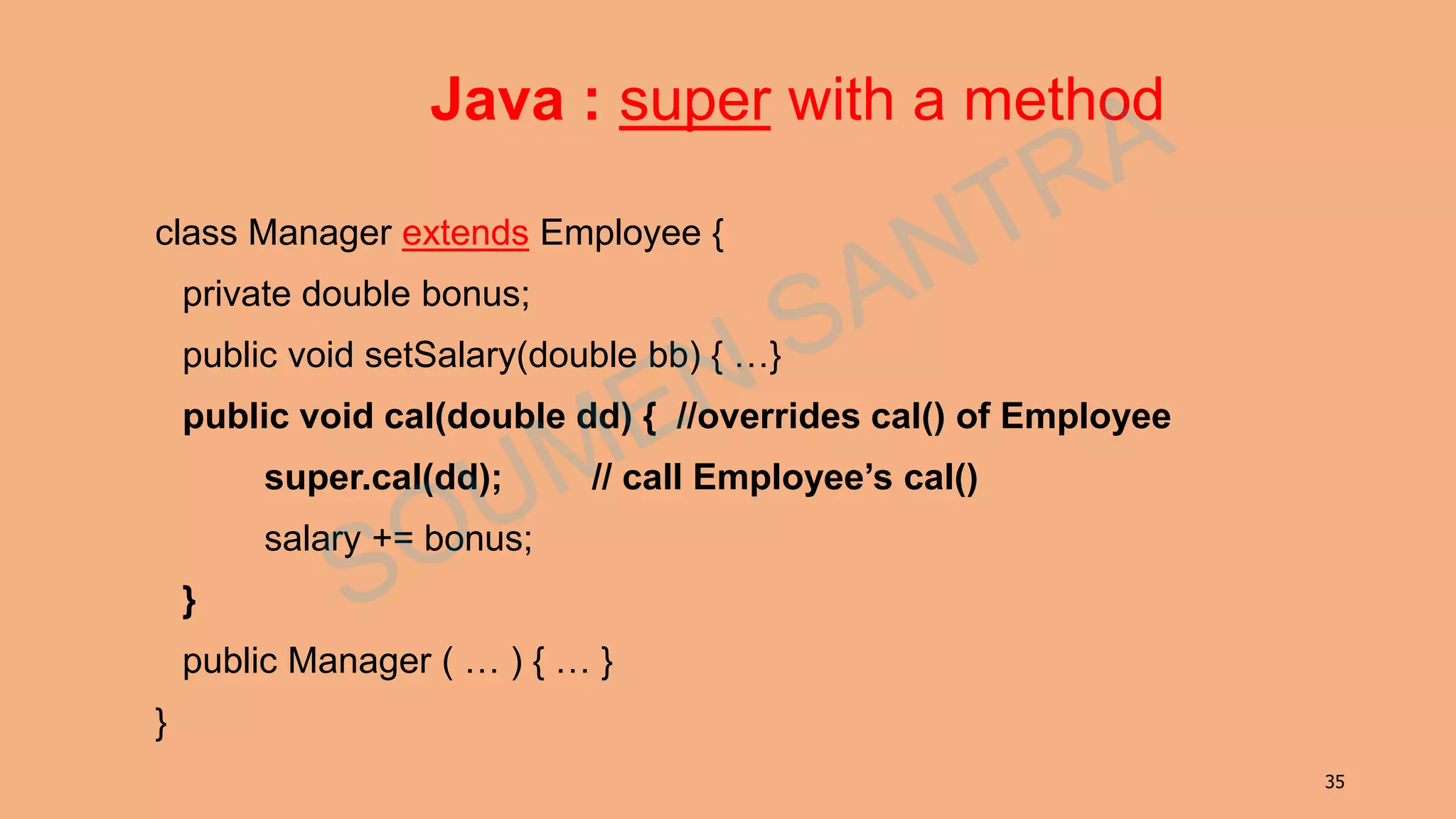
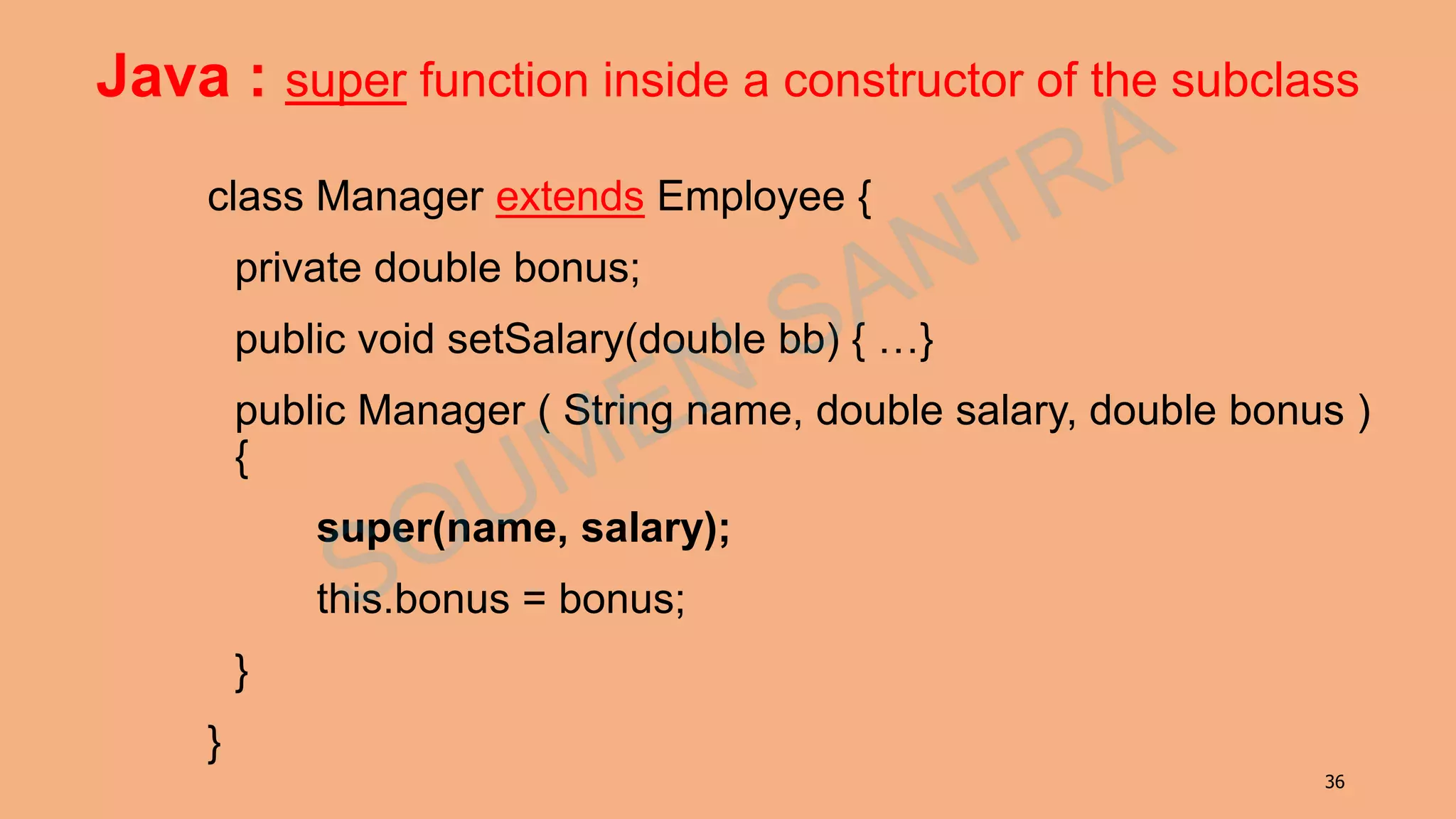
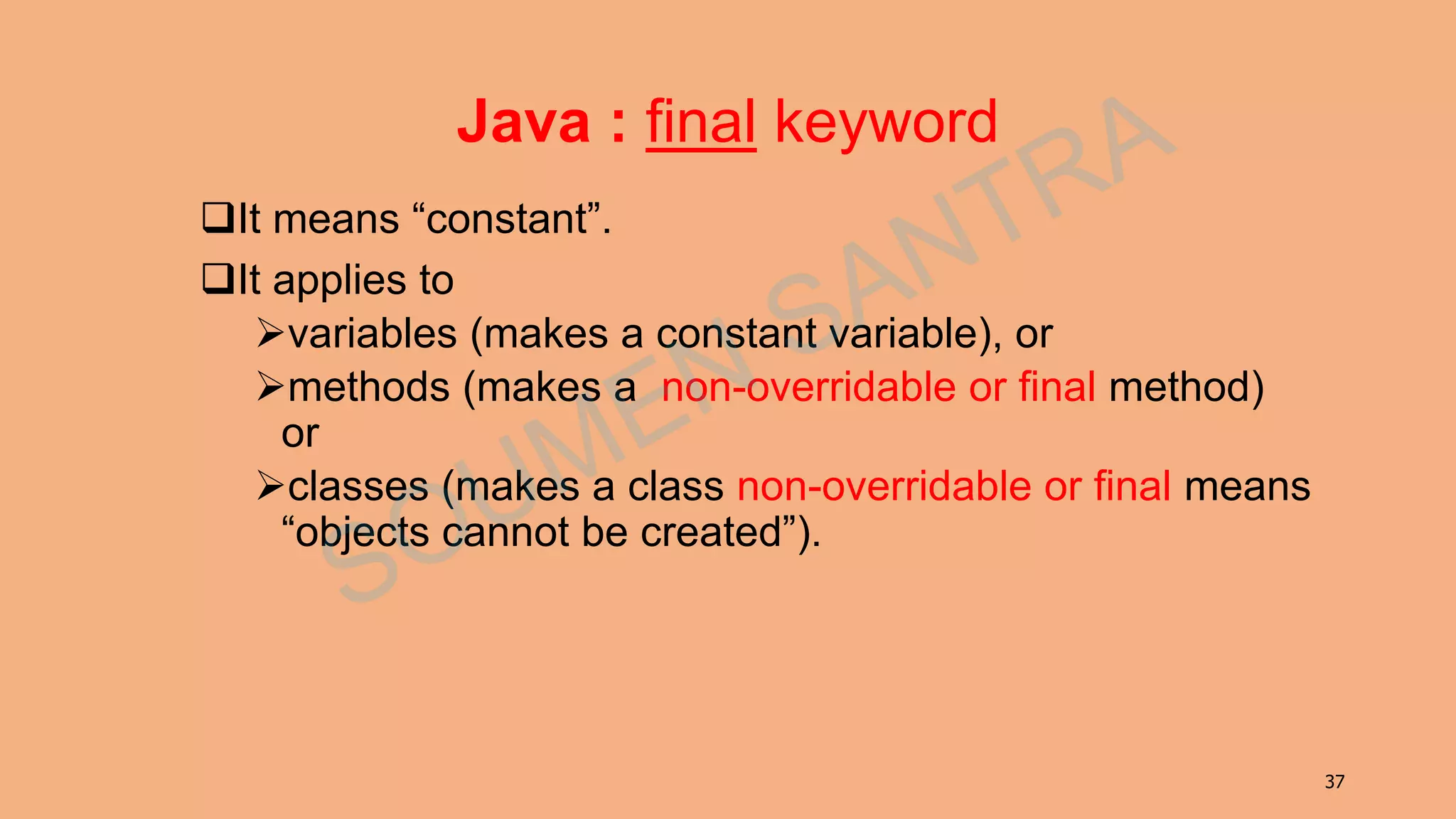
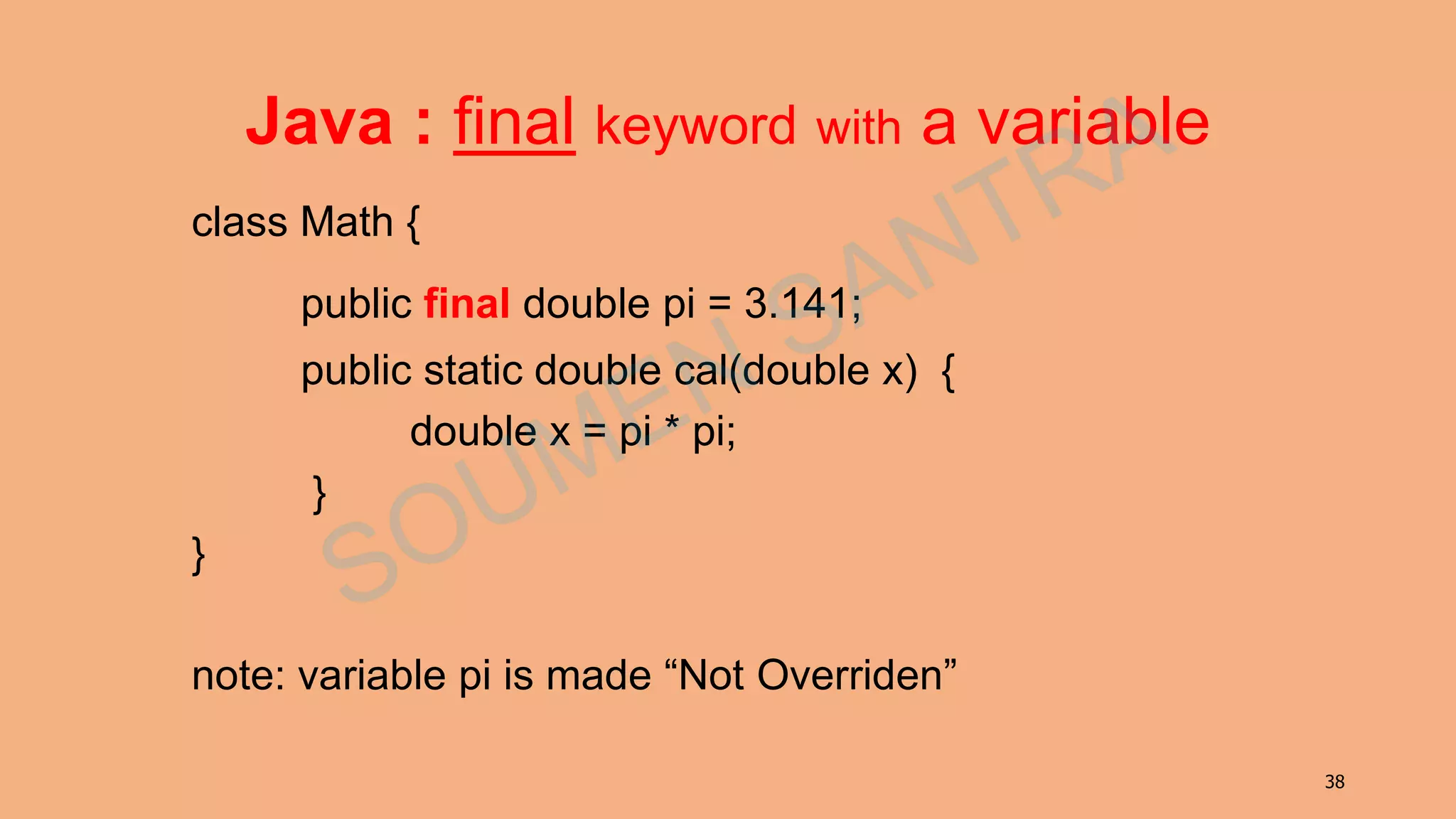
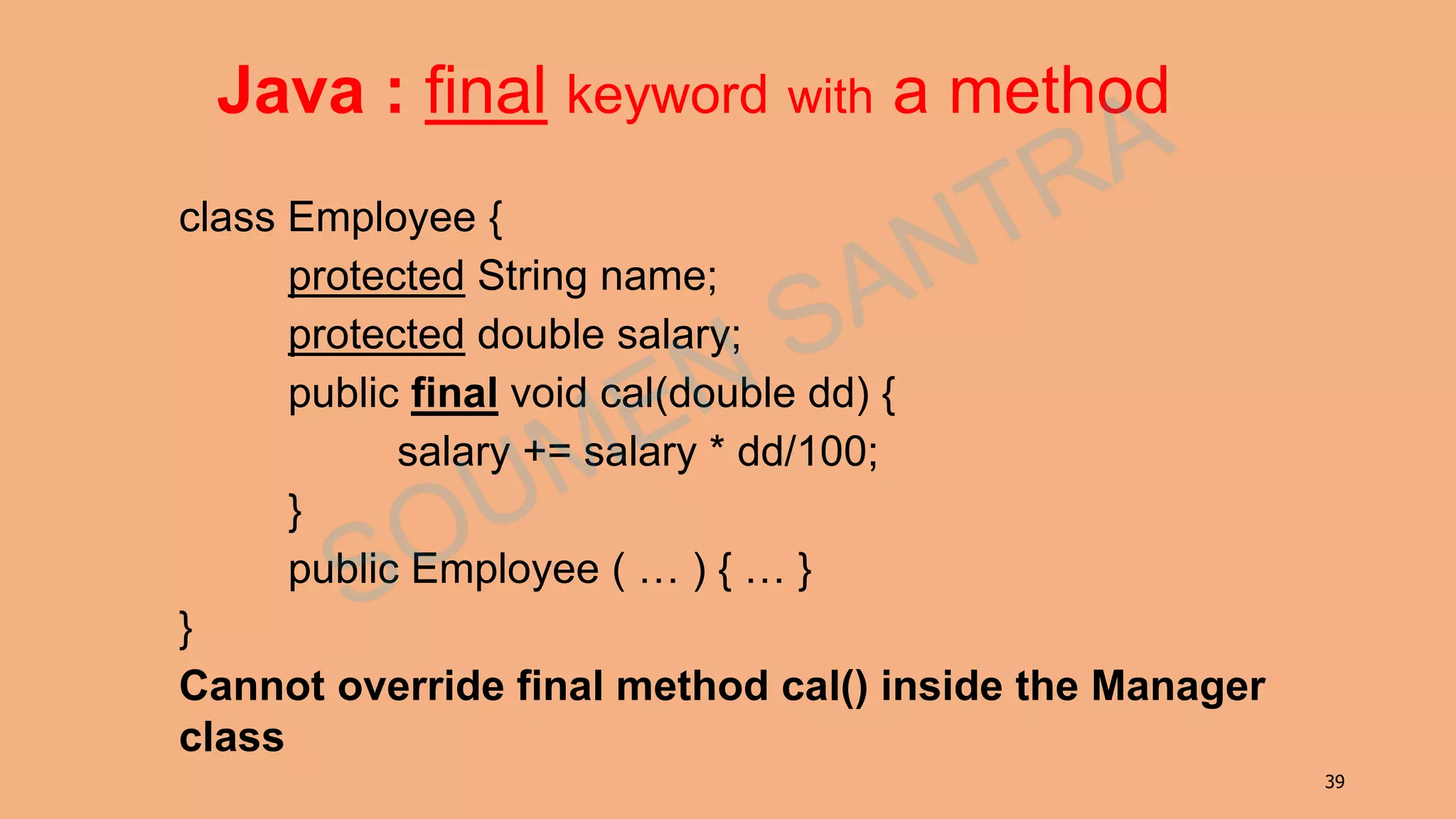
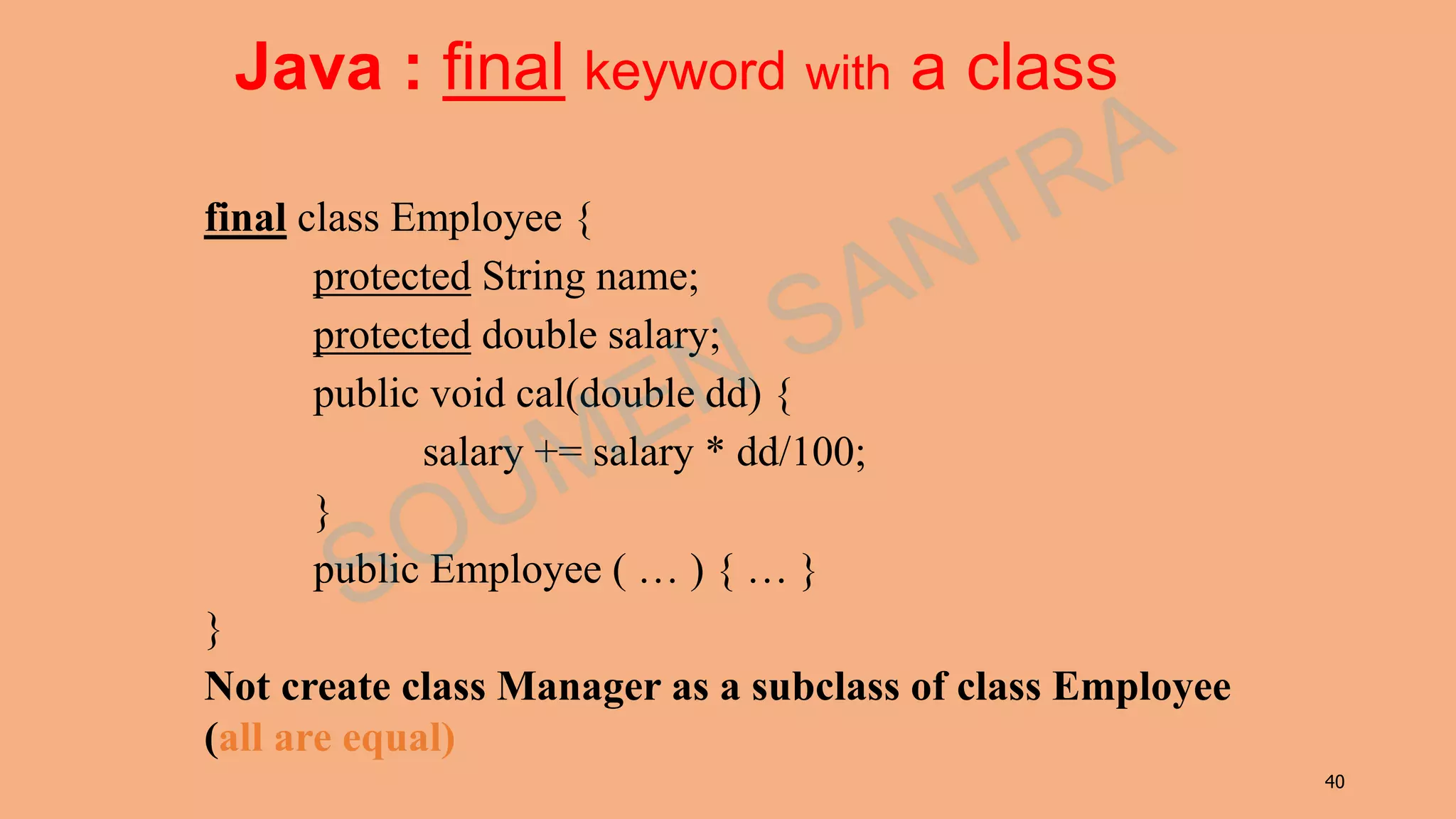
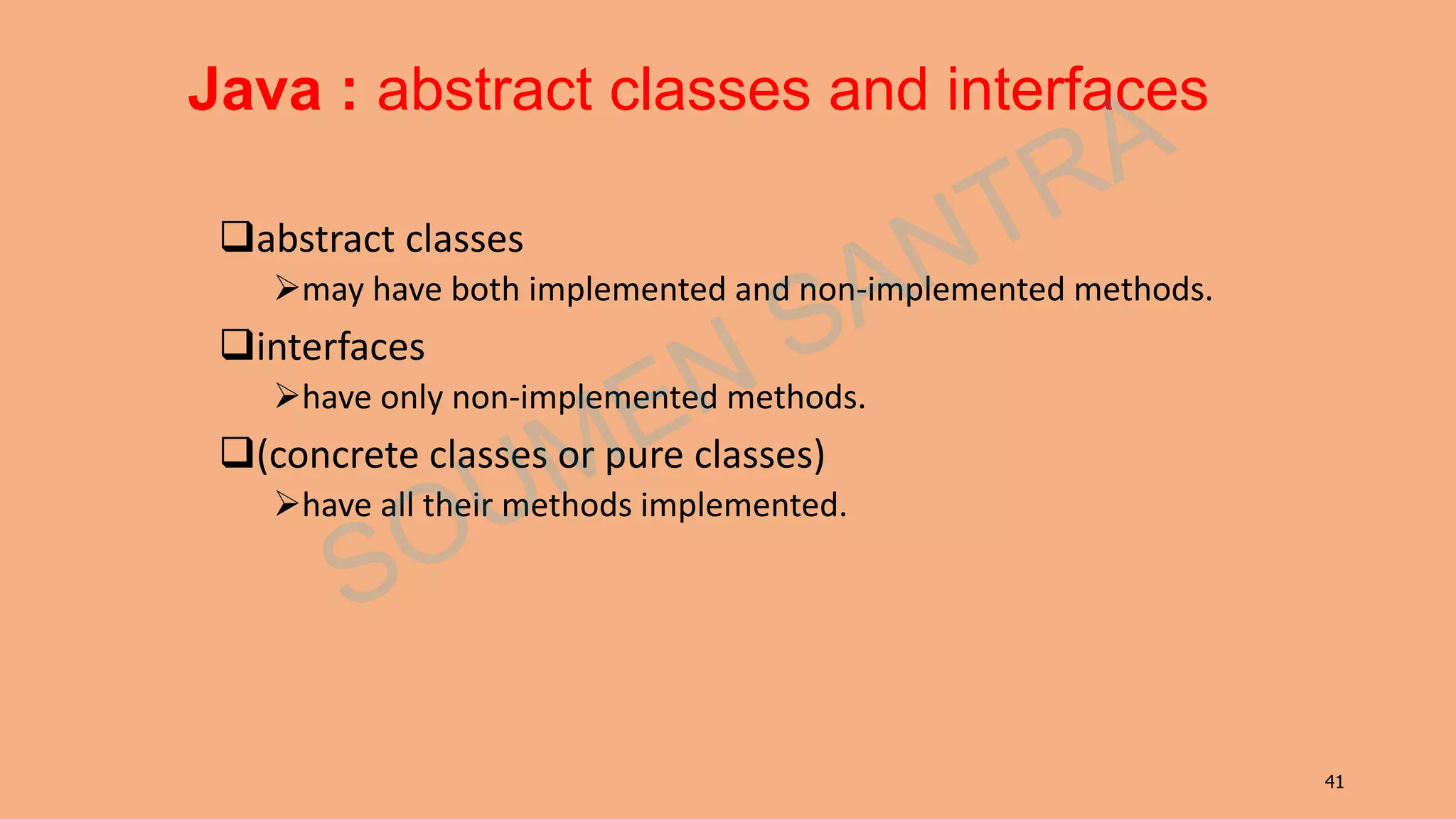
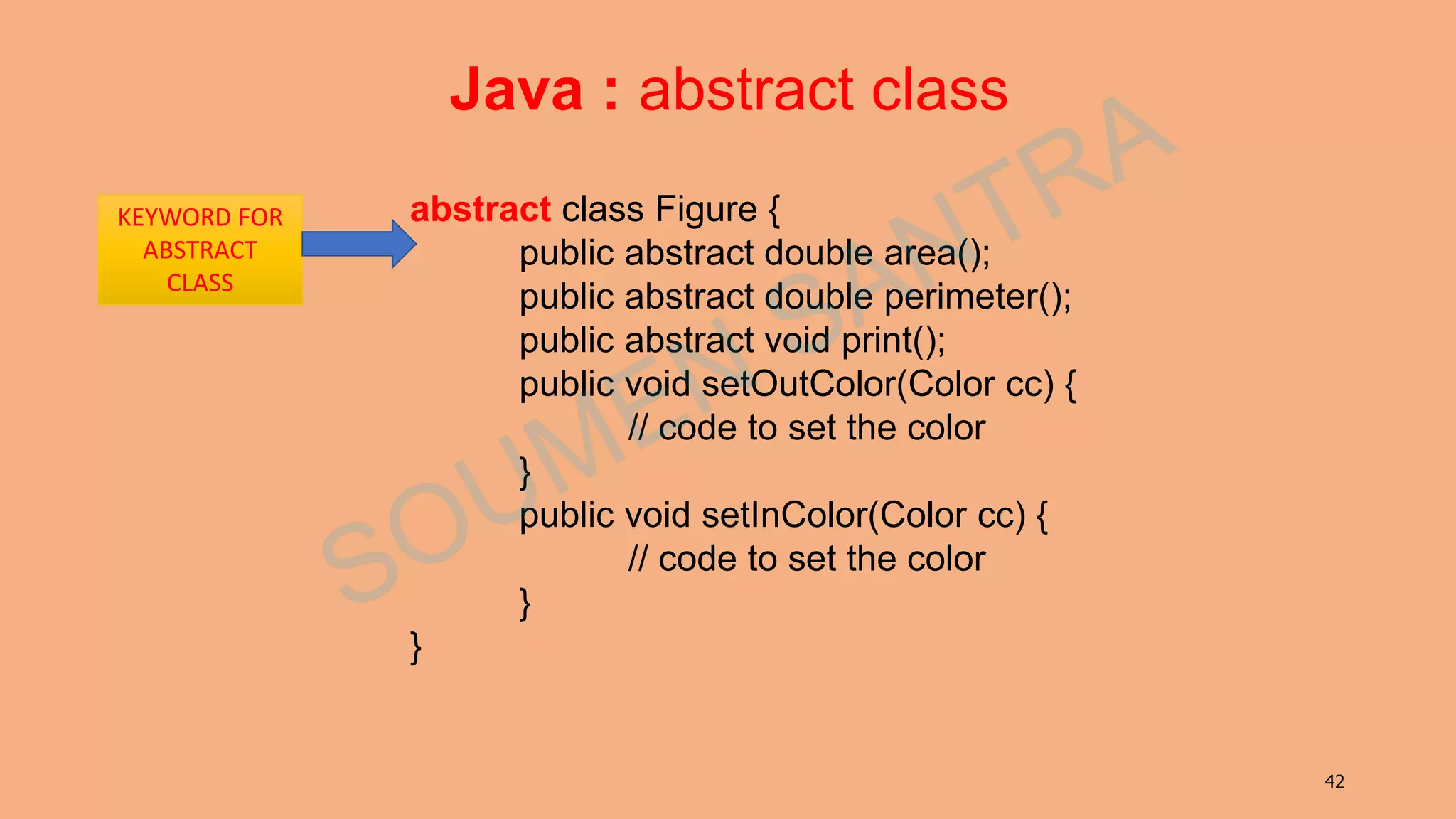
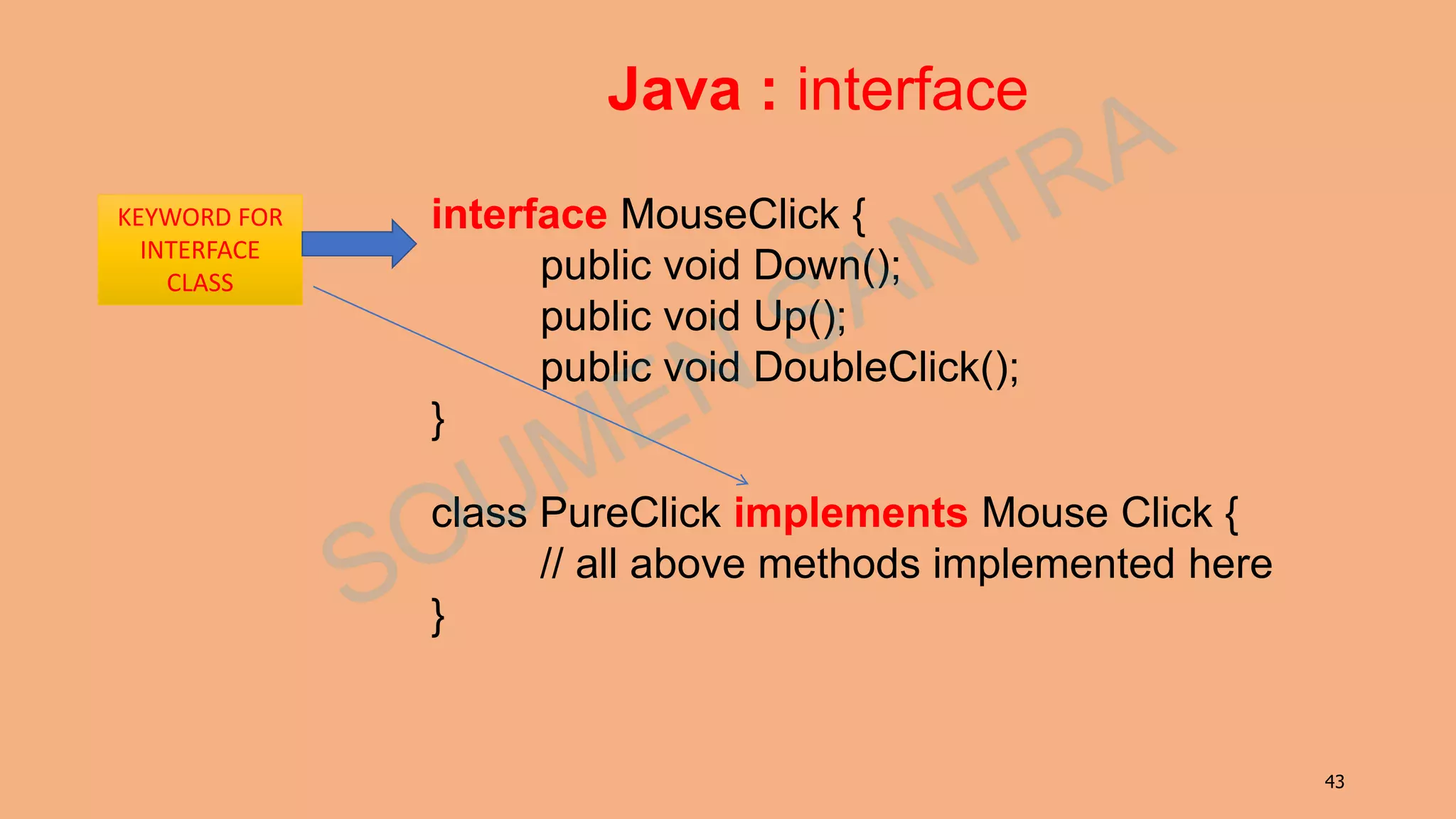
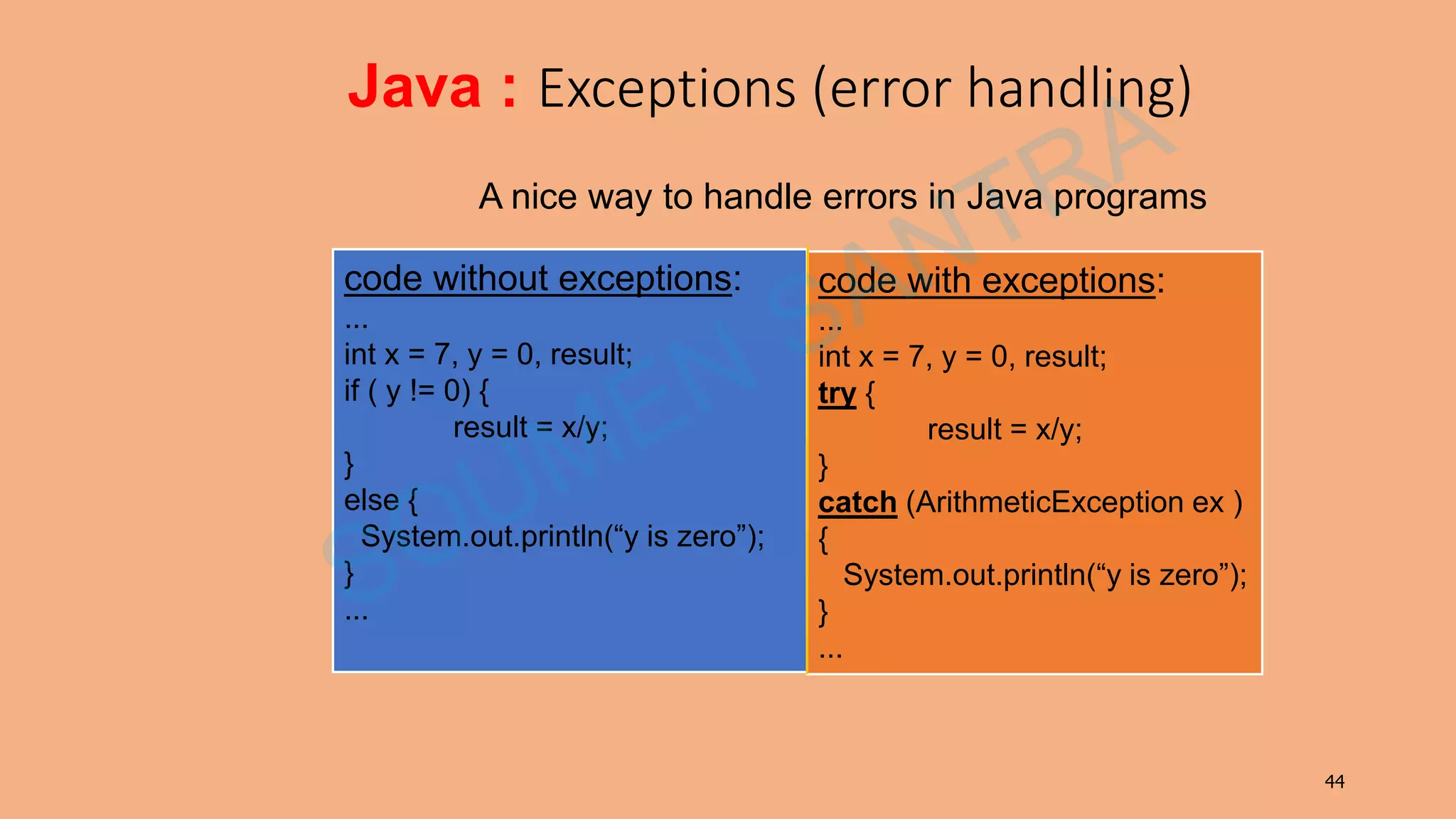
![45 Java : Exceptions (try-catch-finally block ) import java.io.*; class Test{ public static void main(String args[]){ int x = 7, y = 0, result; try { result = x/y; /// more code .. Main operations } catch (ArithmeticException ex1 ) { System.out.println(“y is zero”); } catch (IOException ex2 ) { System.out.println(“Can’t read Format error”); } finally { System.out.println(“Closing file”); /// code to close file, release memory. } }} KEYWORD FOR Exception CLASS Package FOR Exception CLASS](https://image.slidesharecdn.com/javabasicpart2-200620165127/75/Java-basic-part-2-Datatypes-Keywords-Features-Components-Security-Exceptions-45-2048.jpg)
